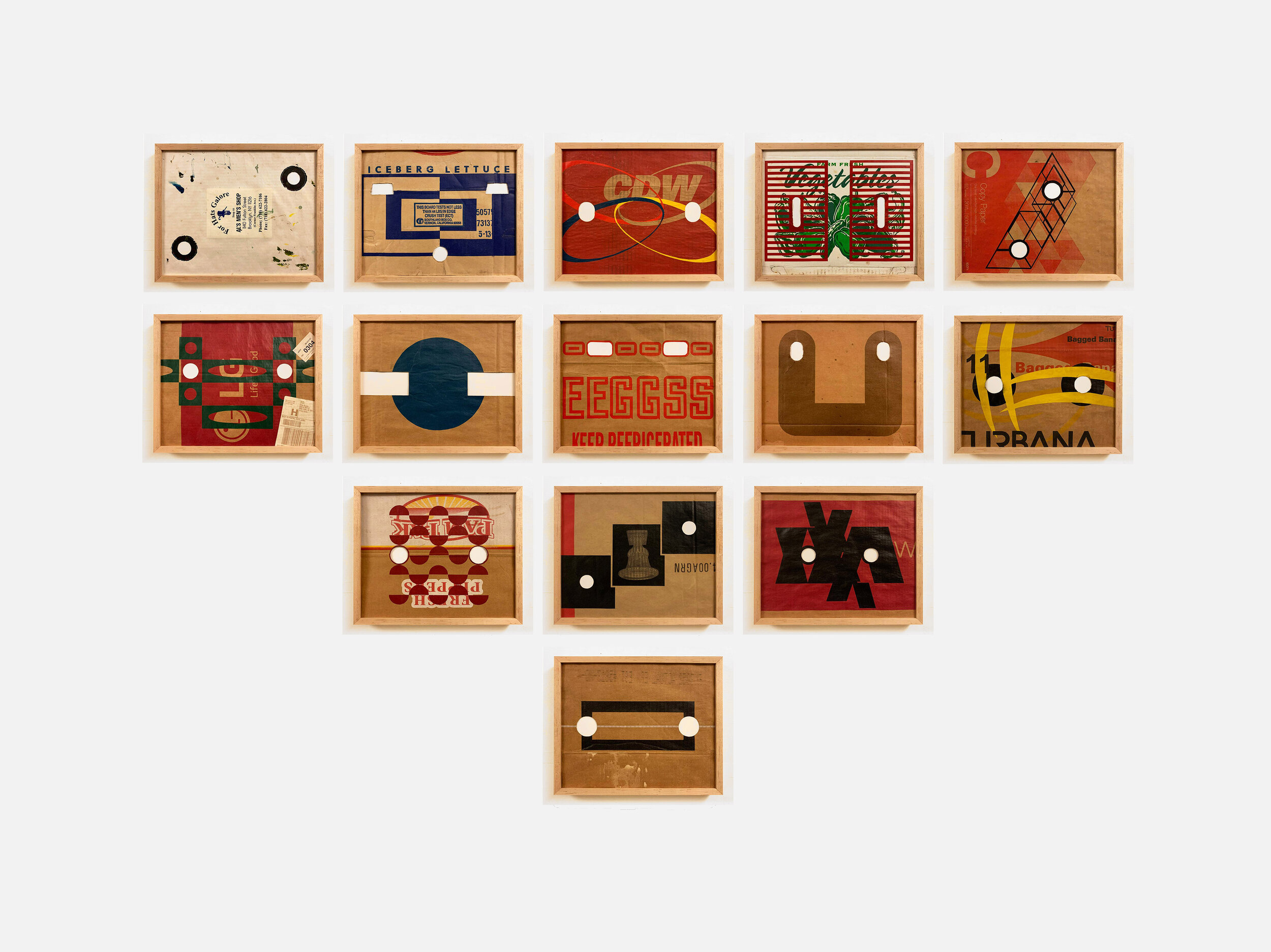
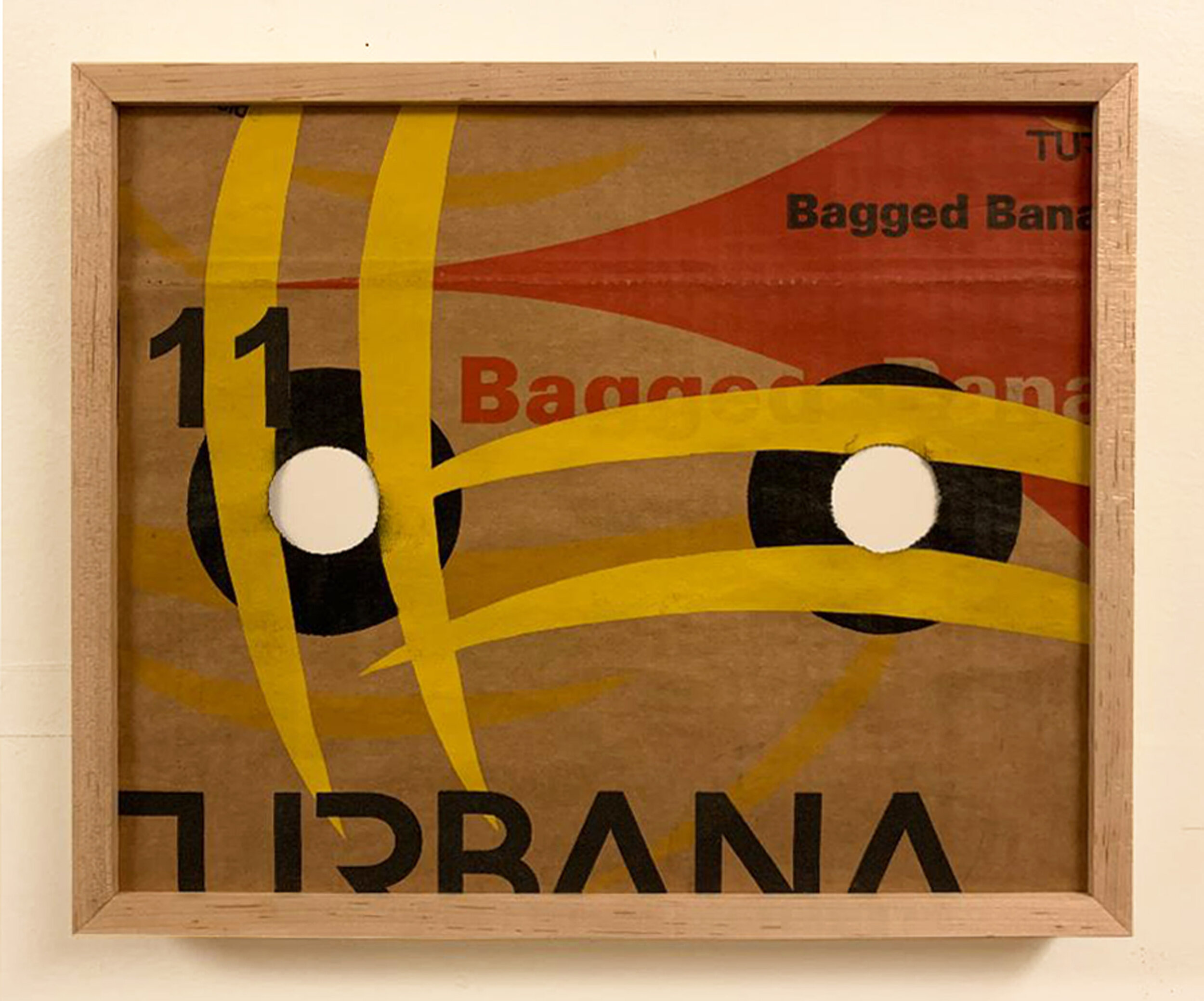
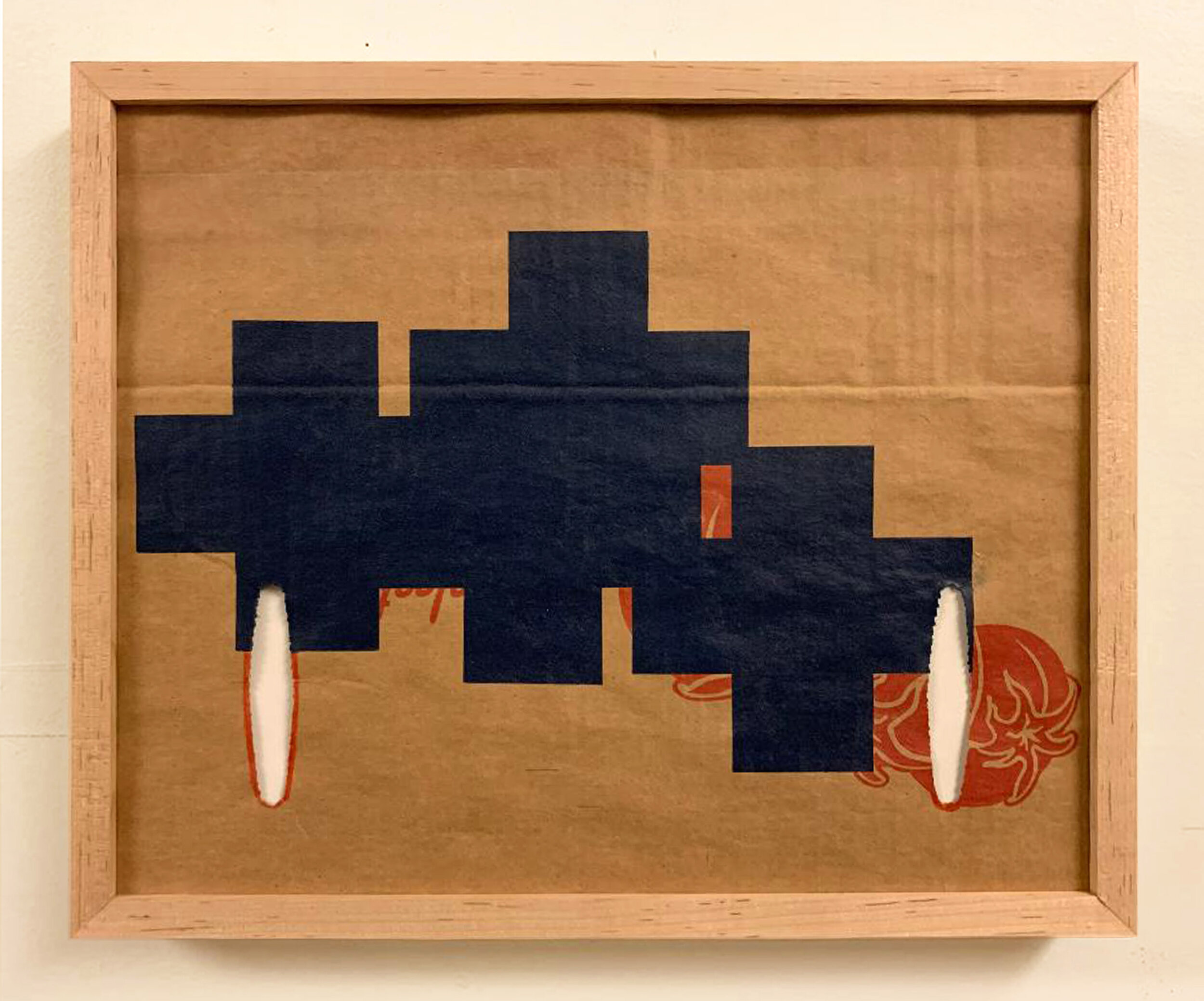

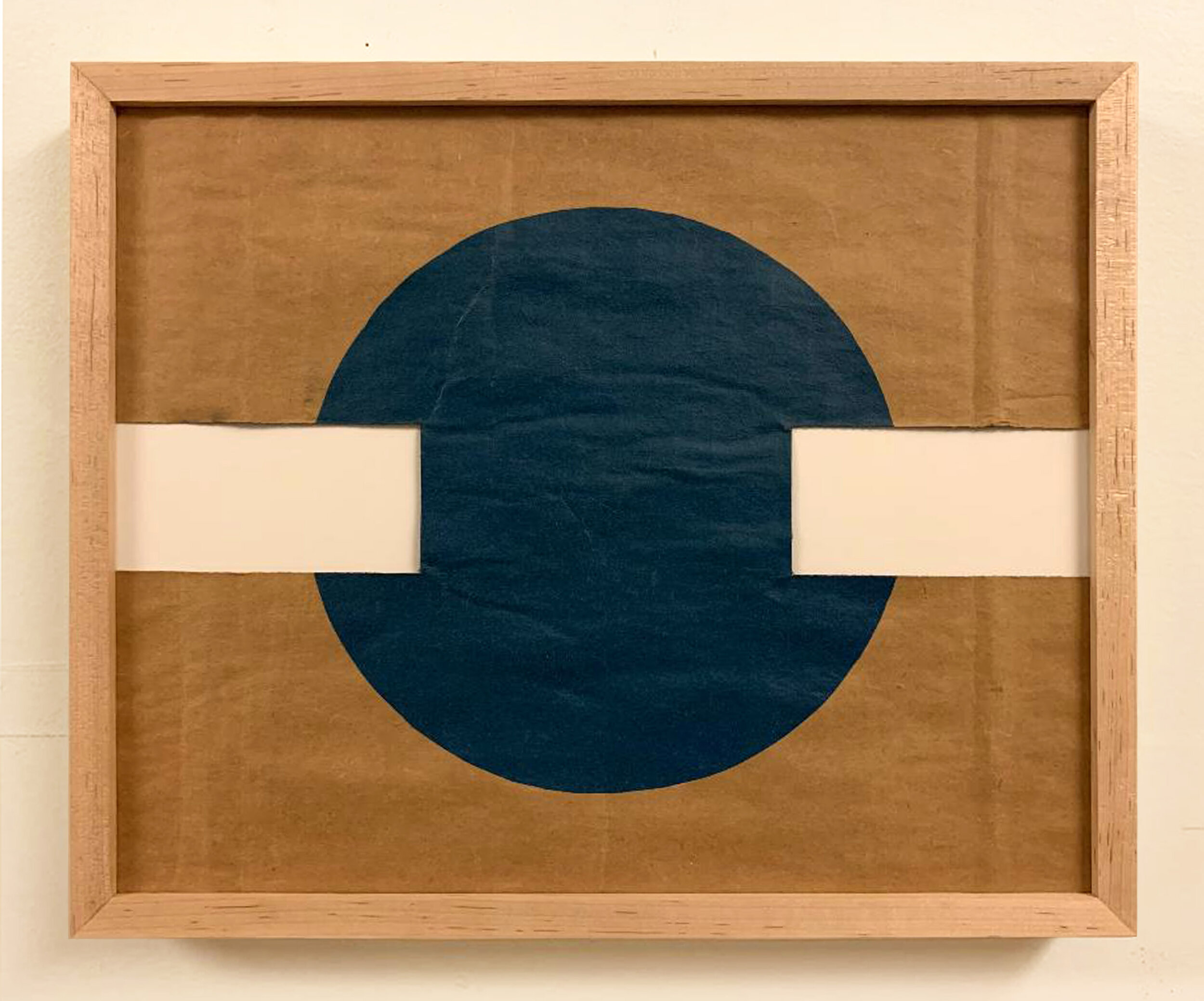
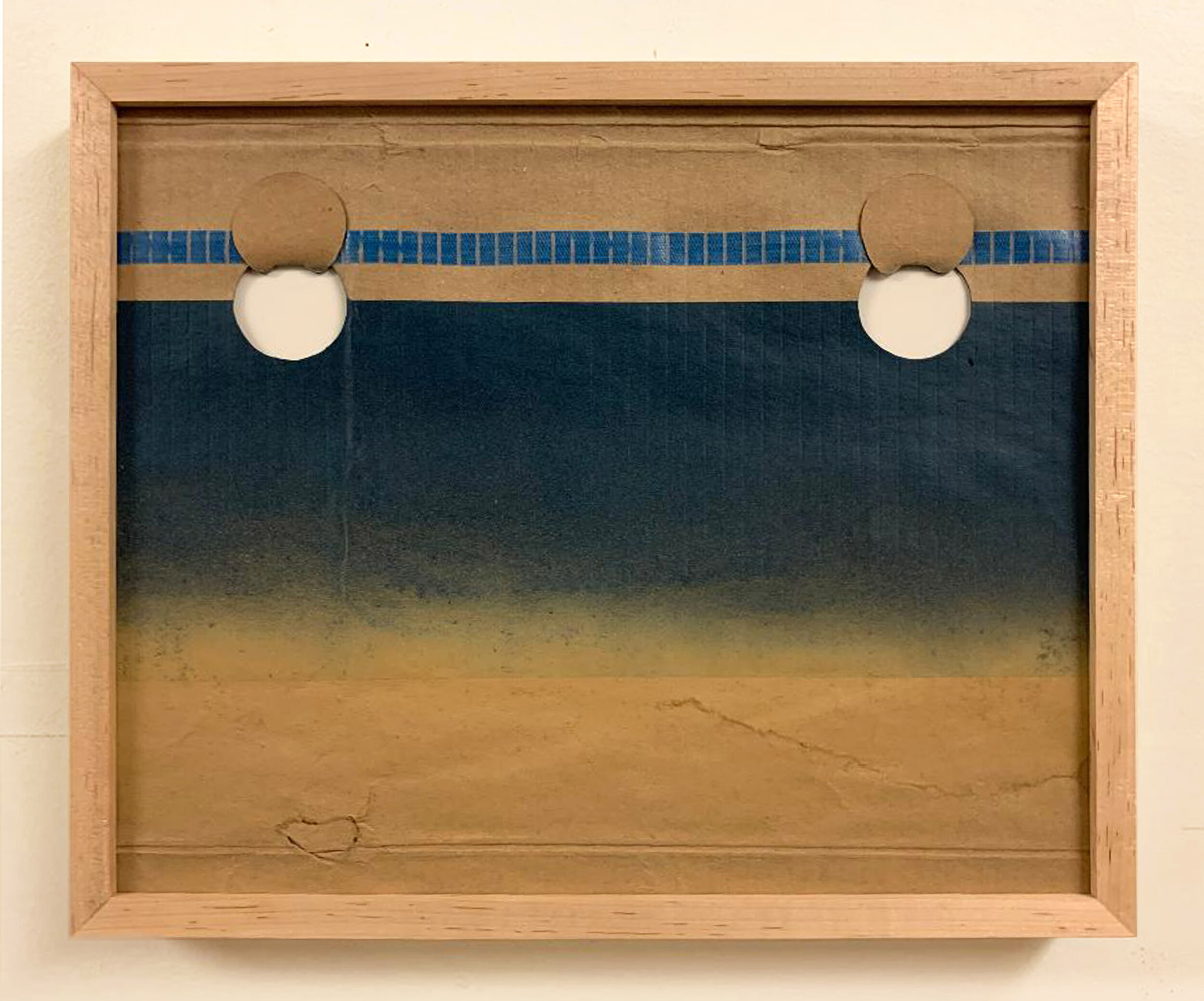
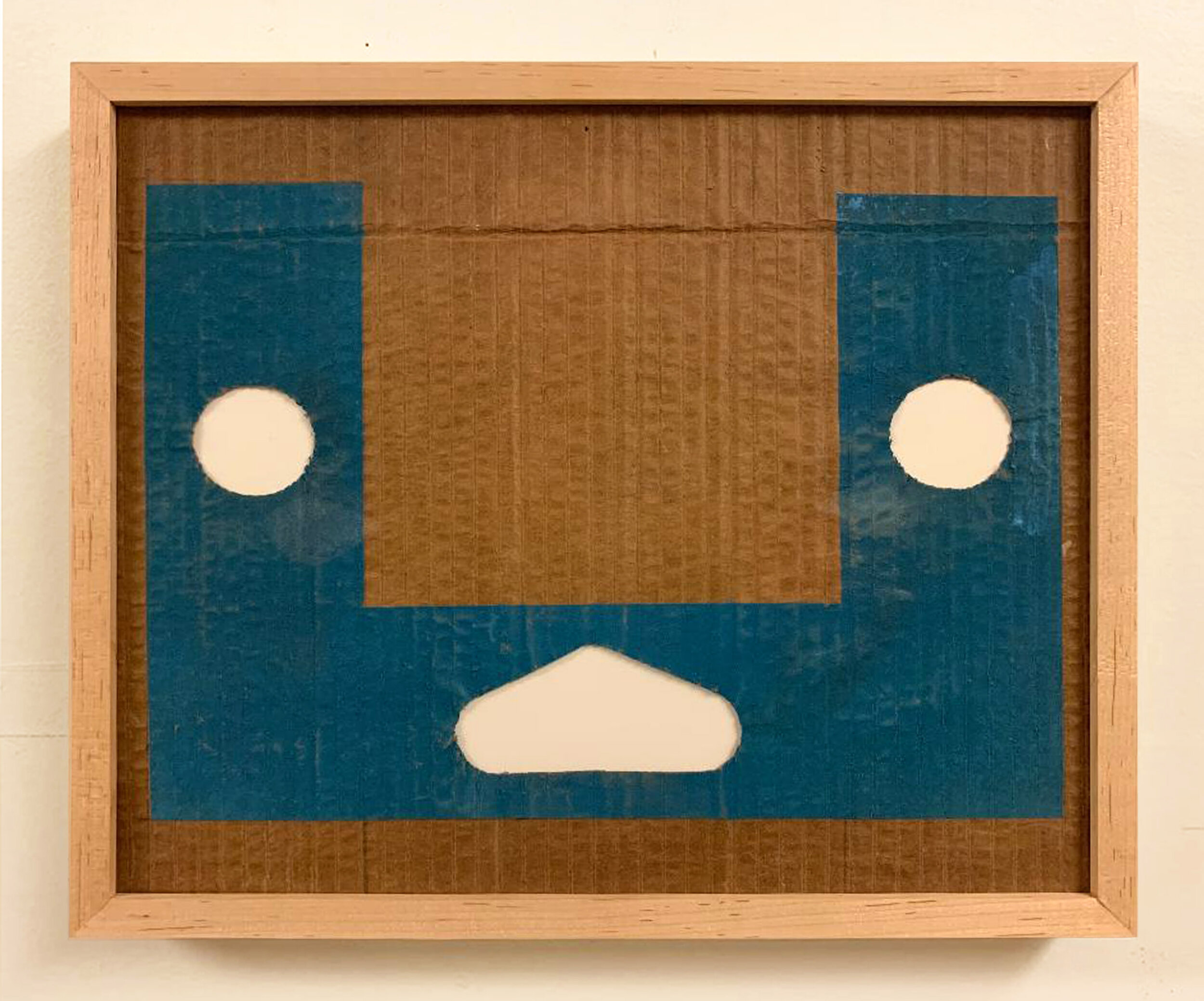
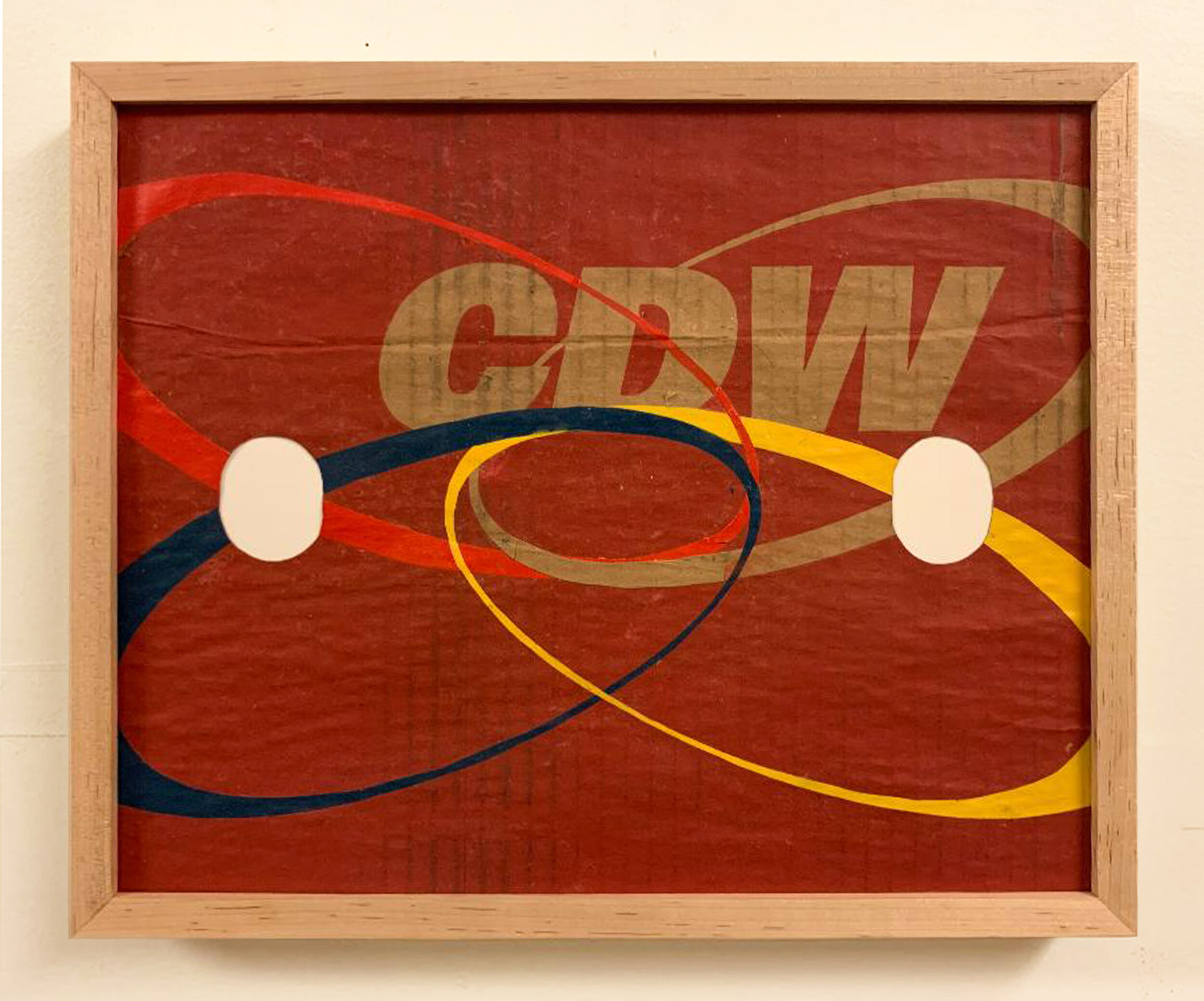
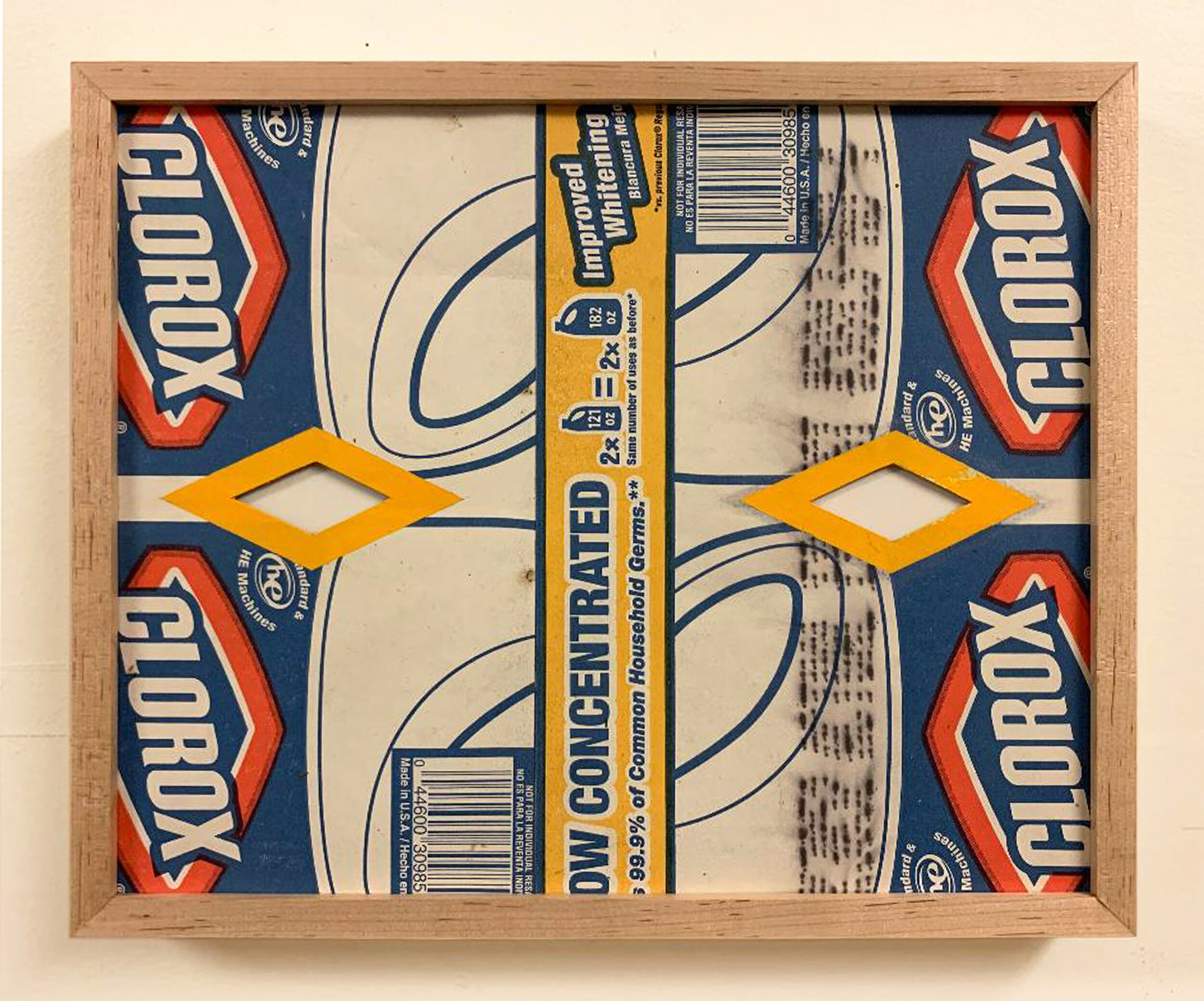
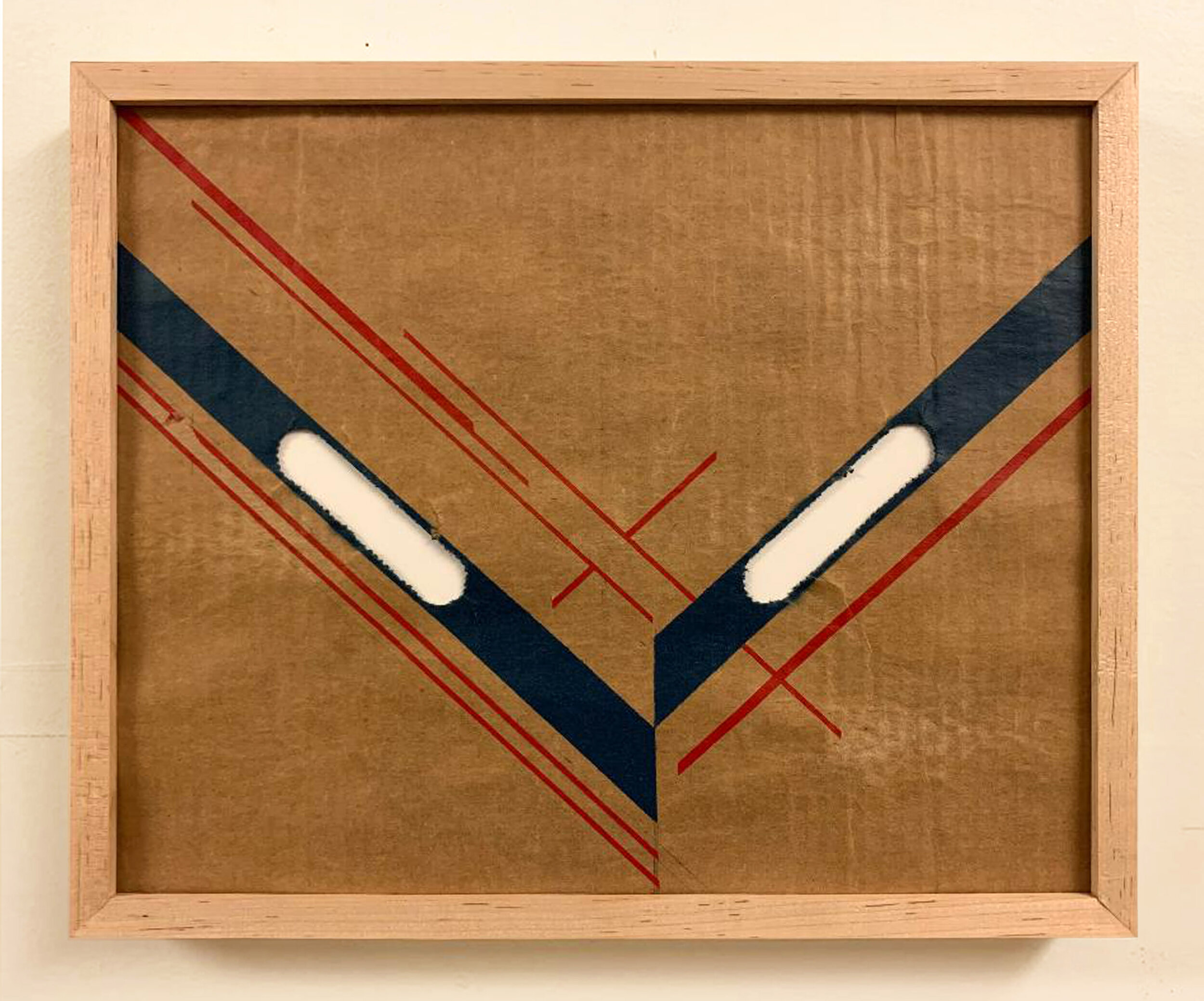
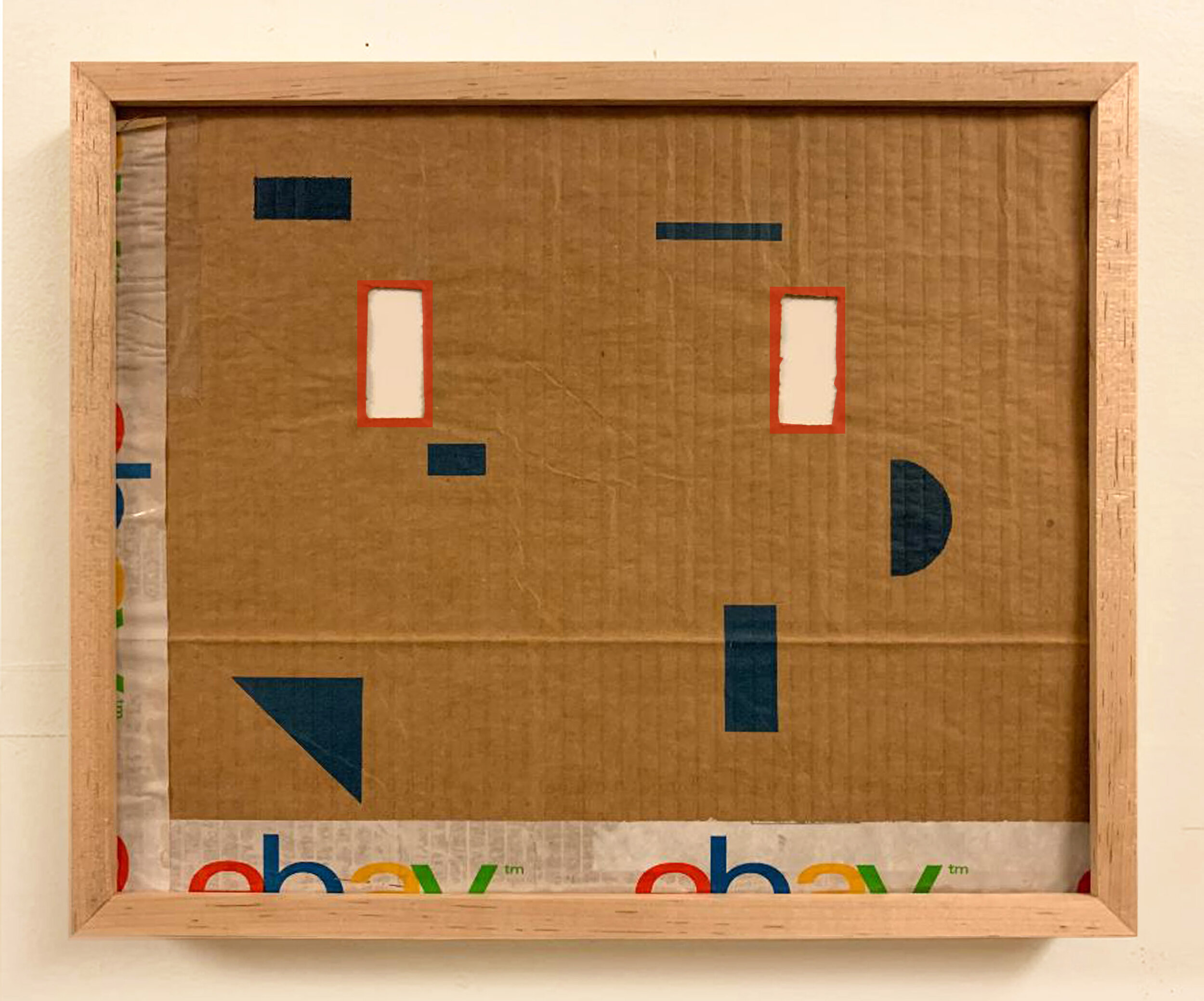
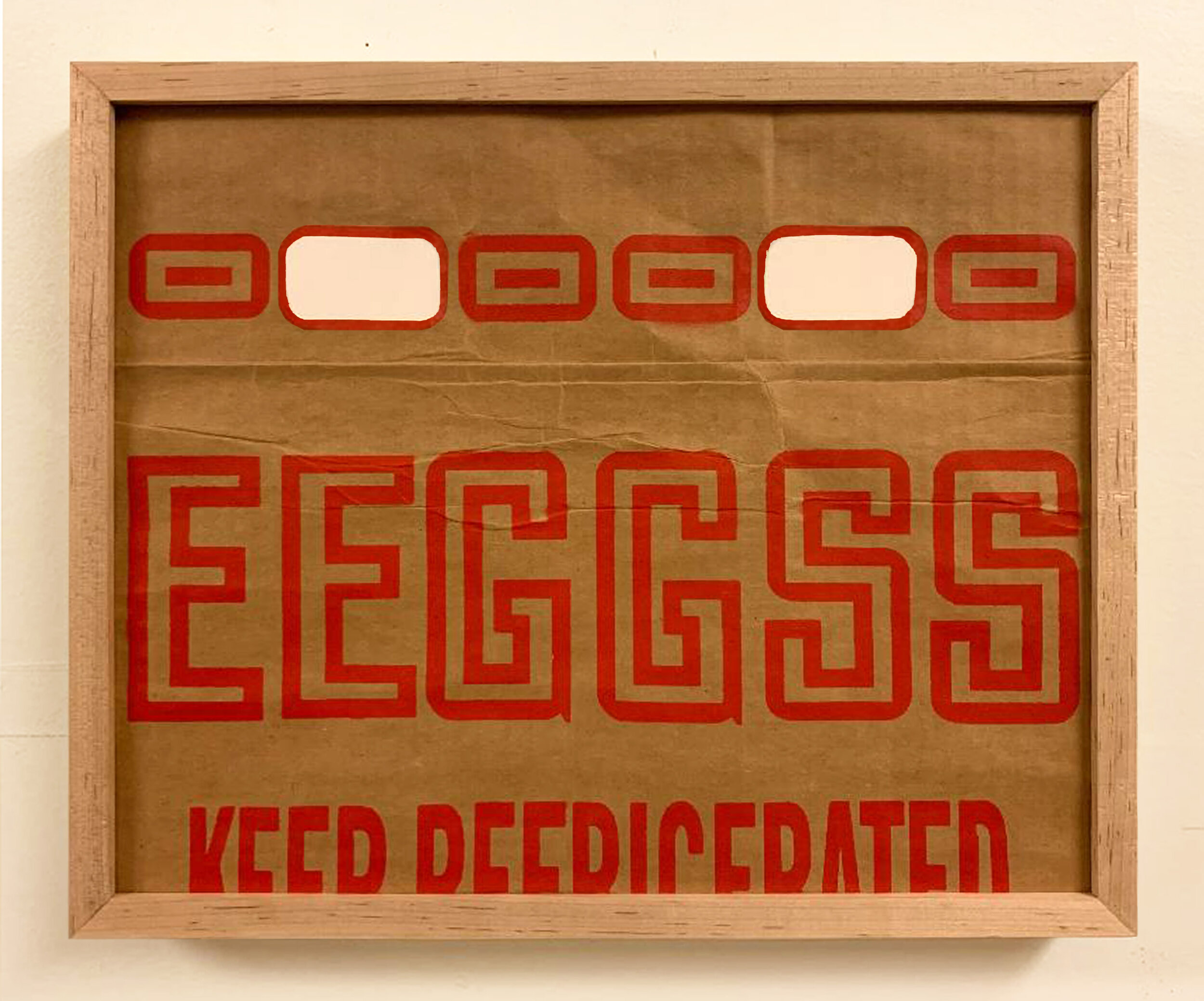
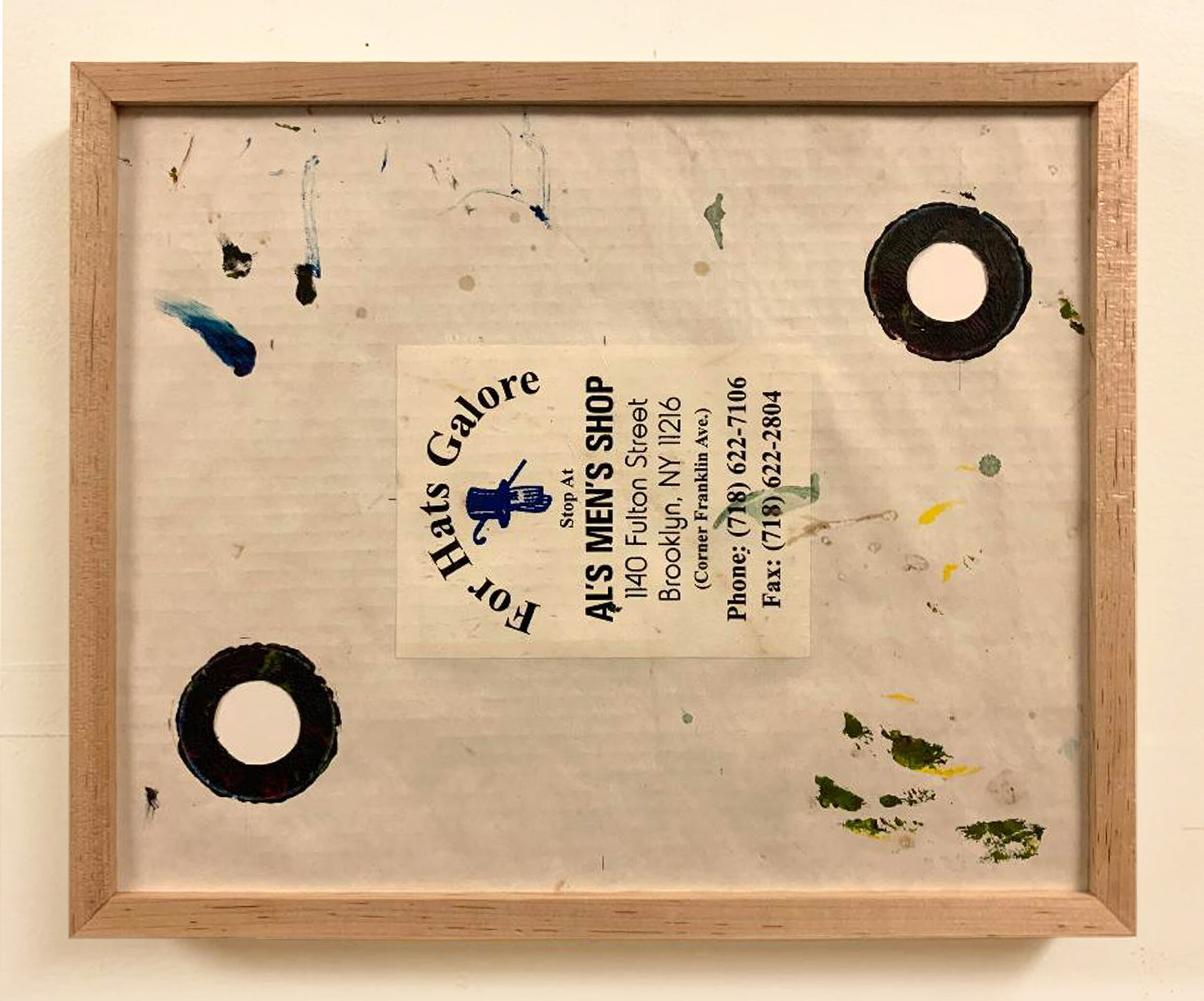
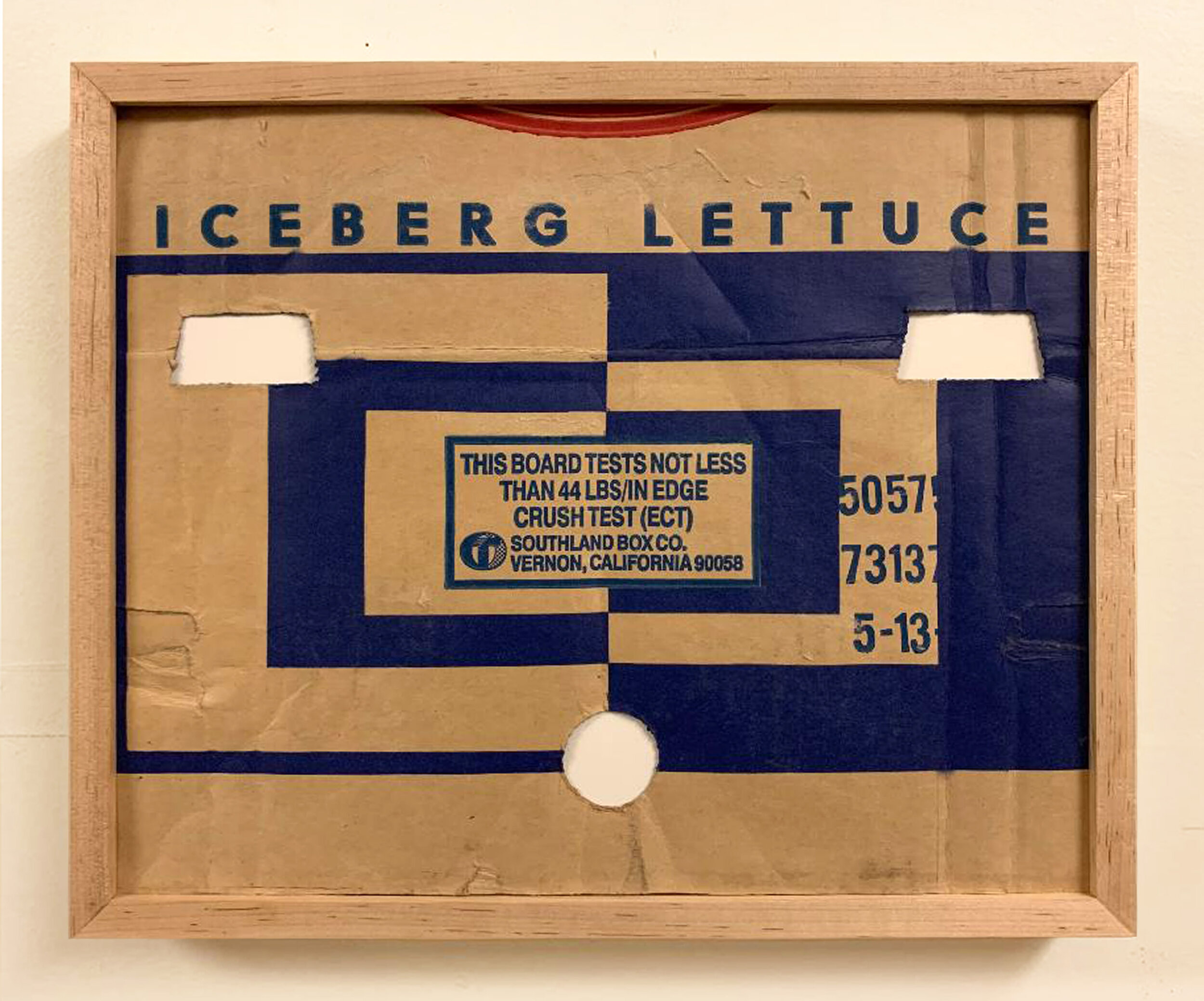
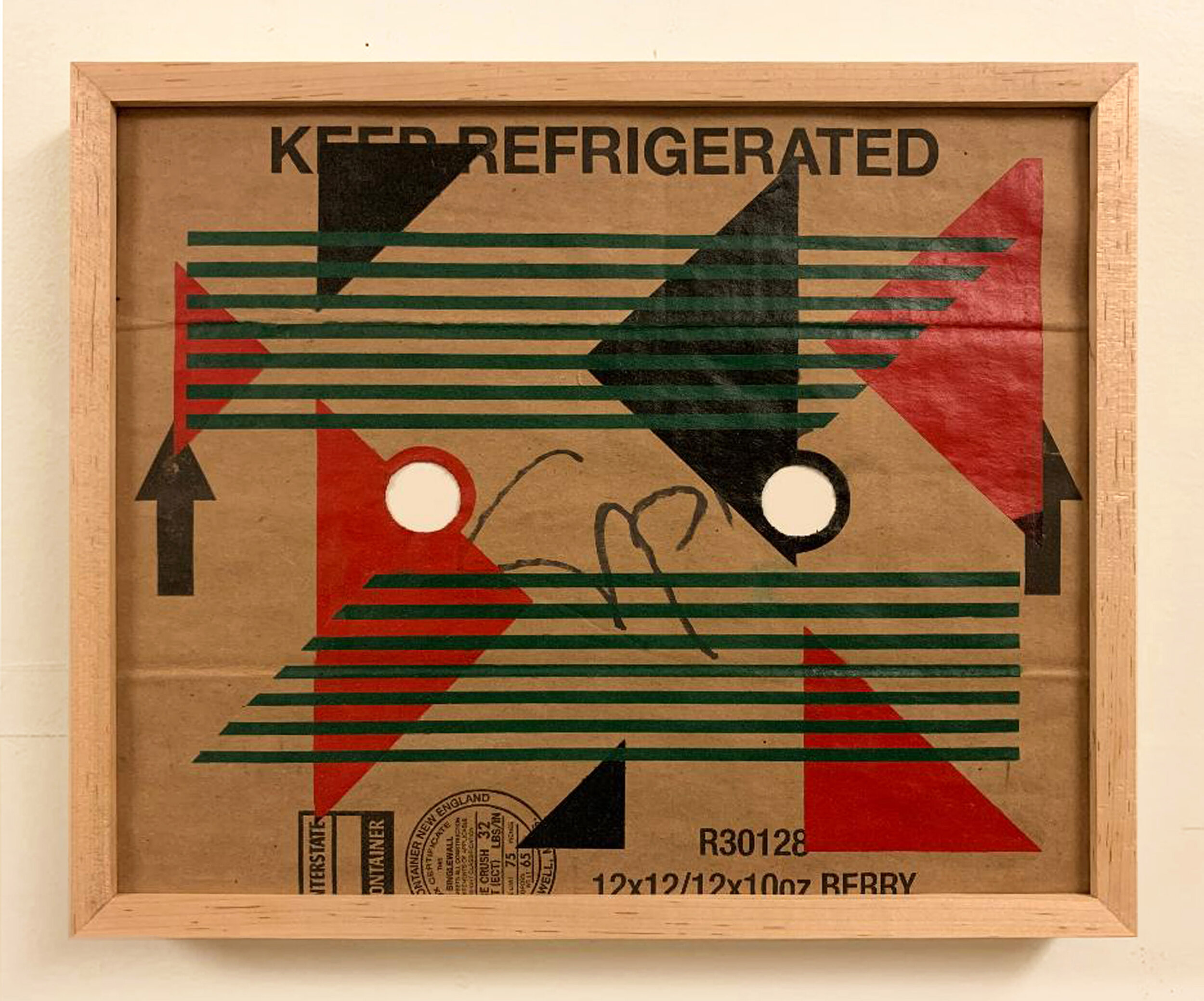
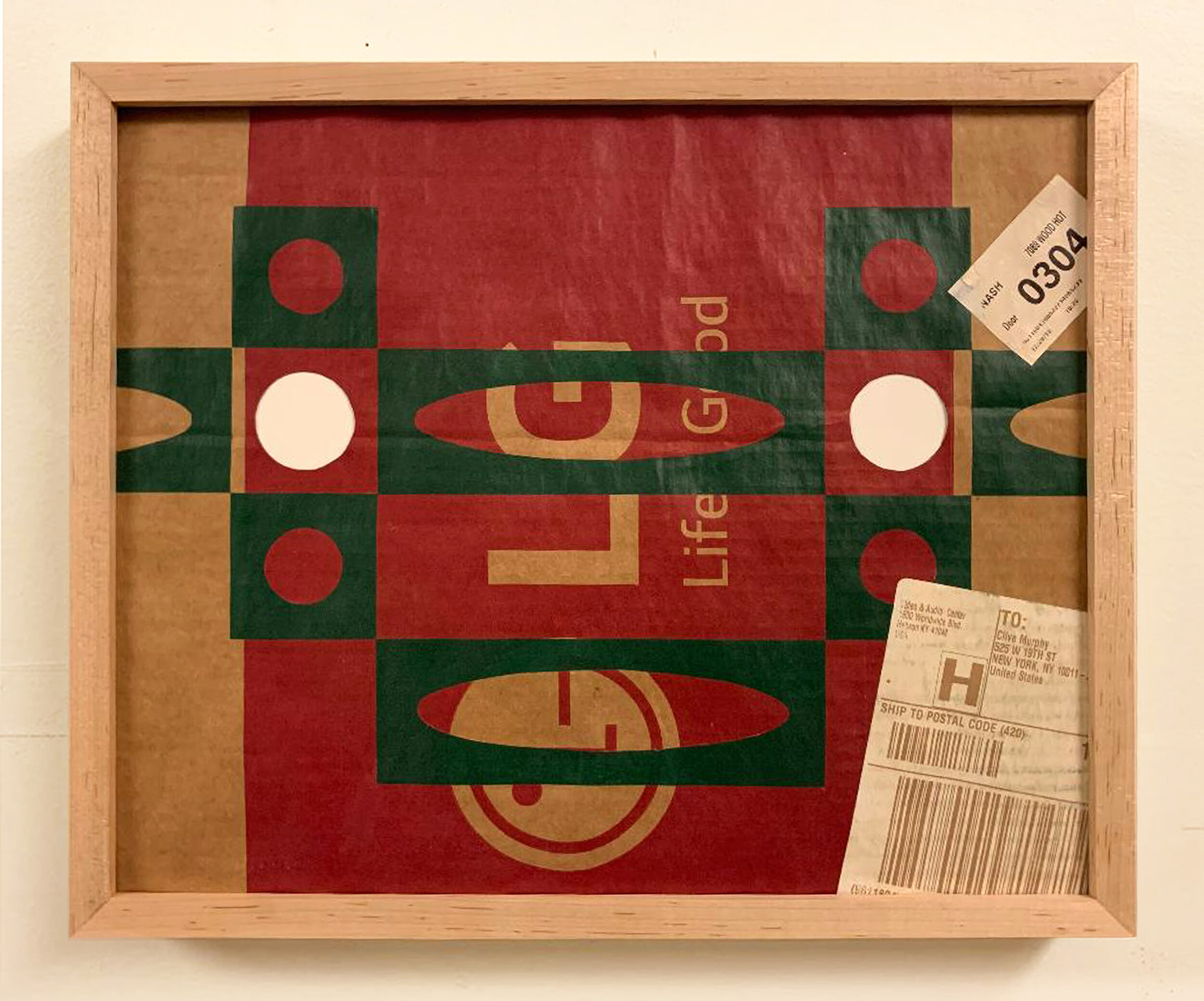
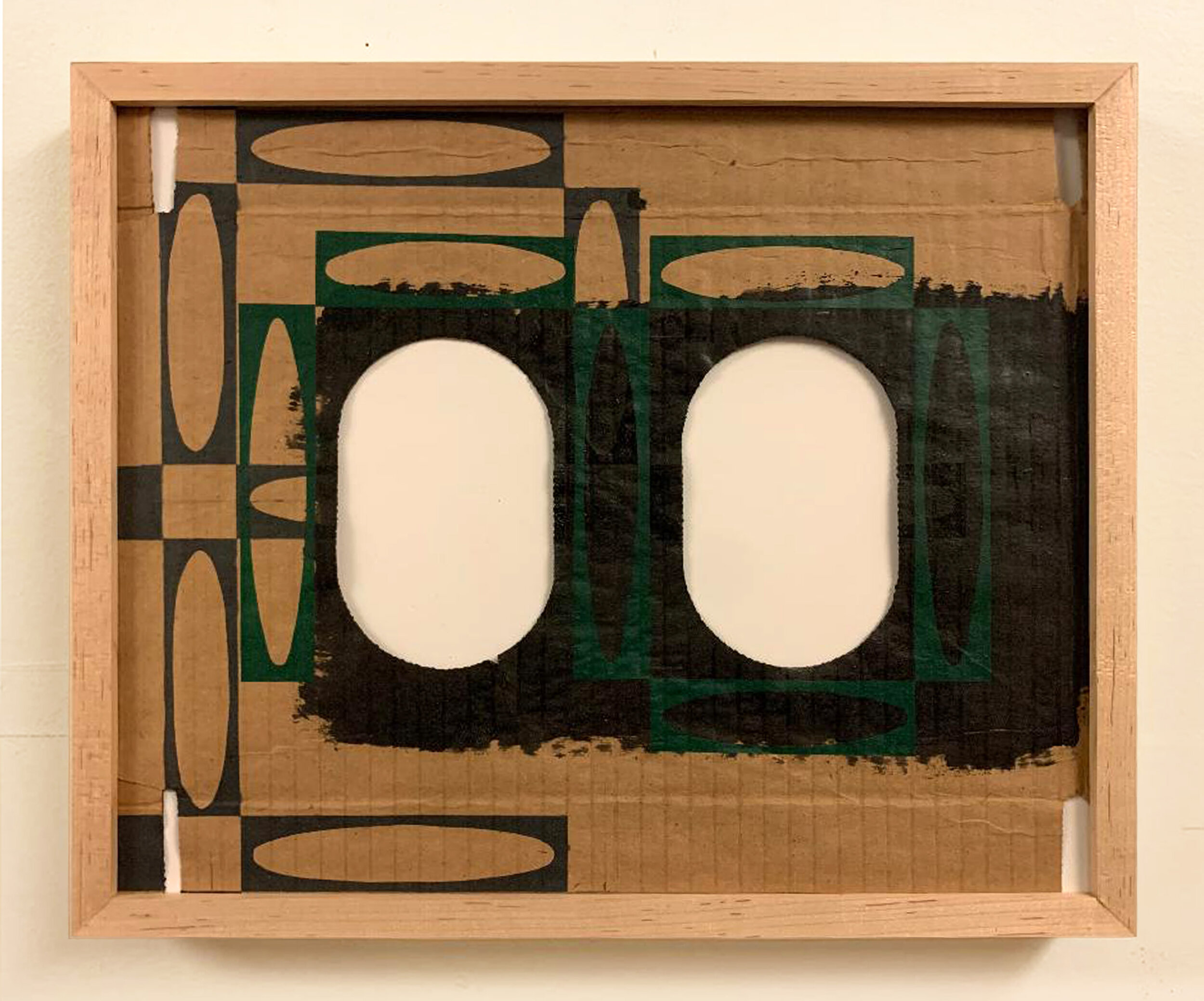
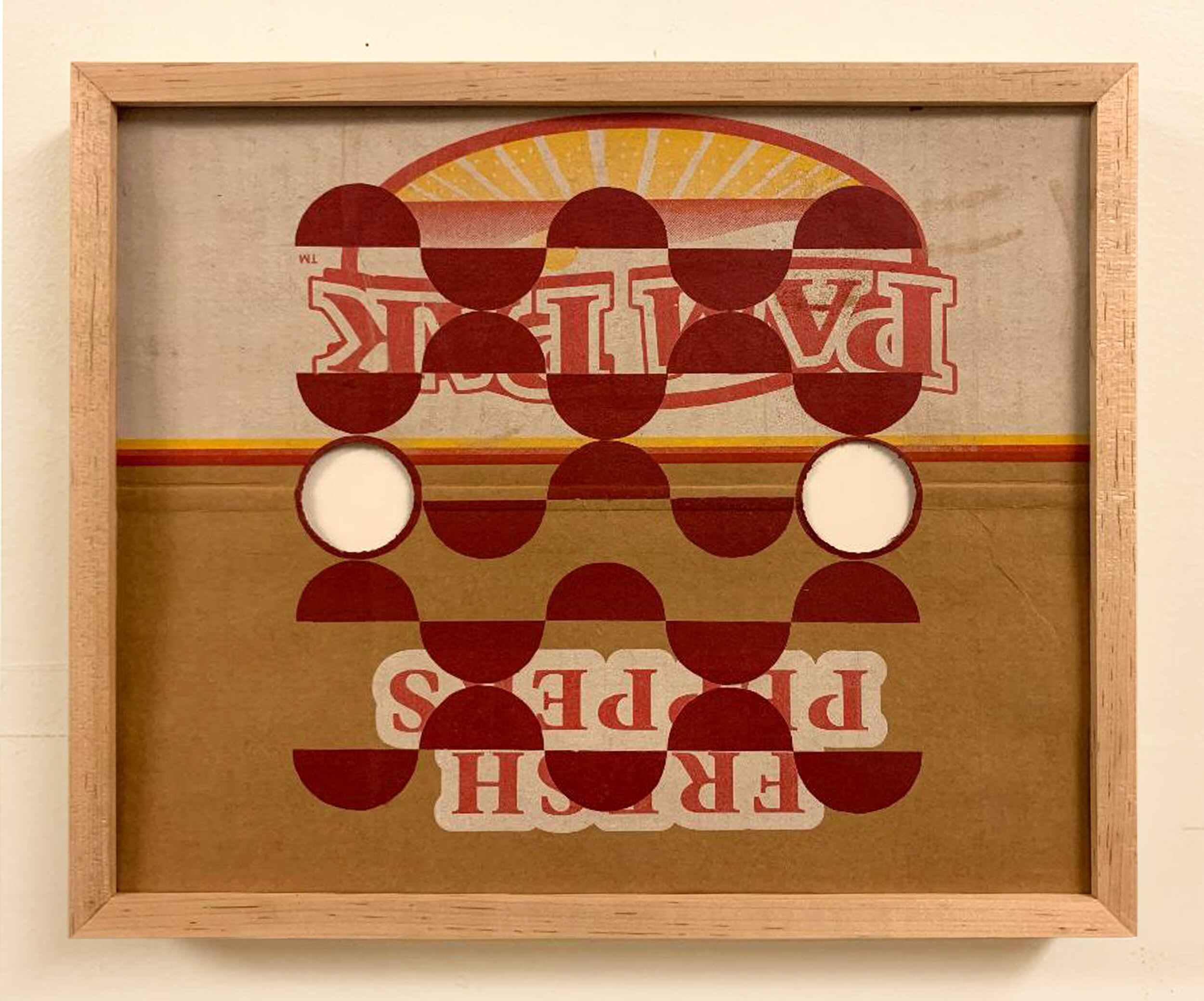
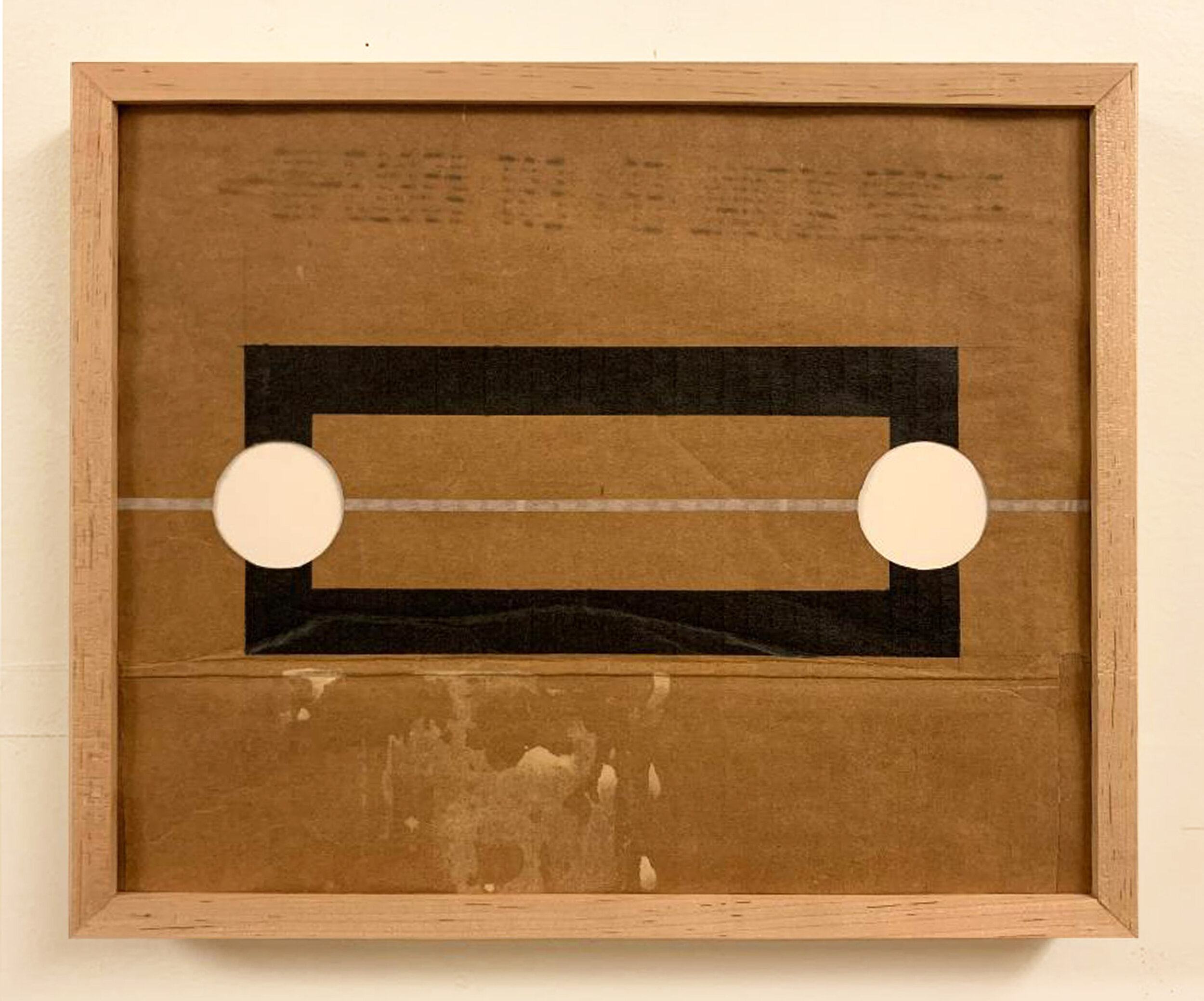
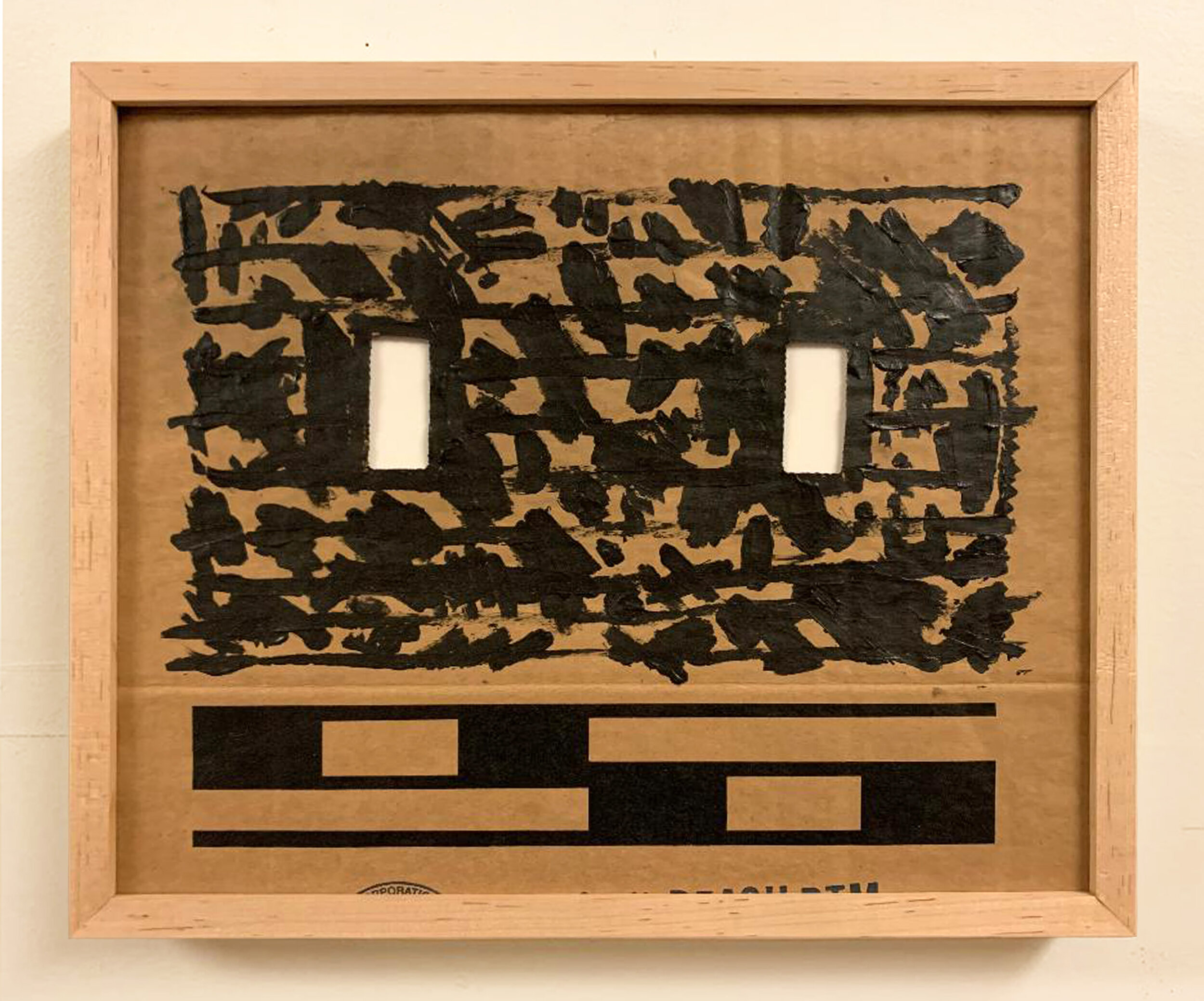
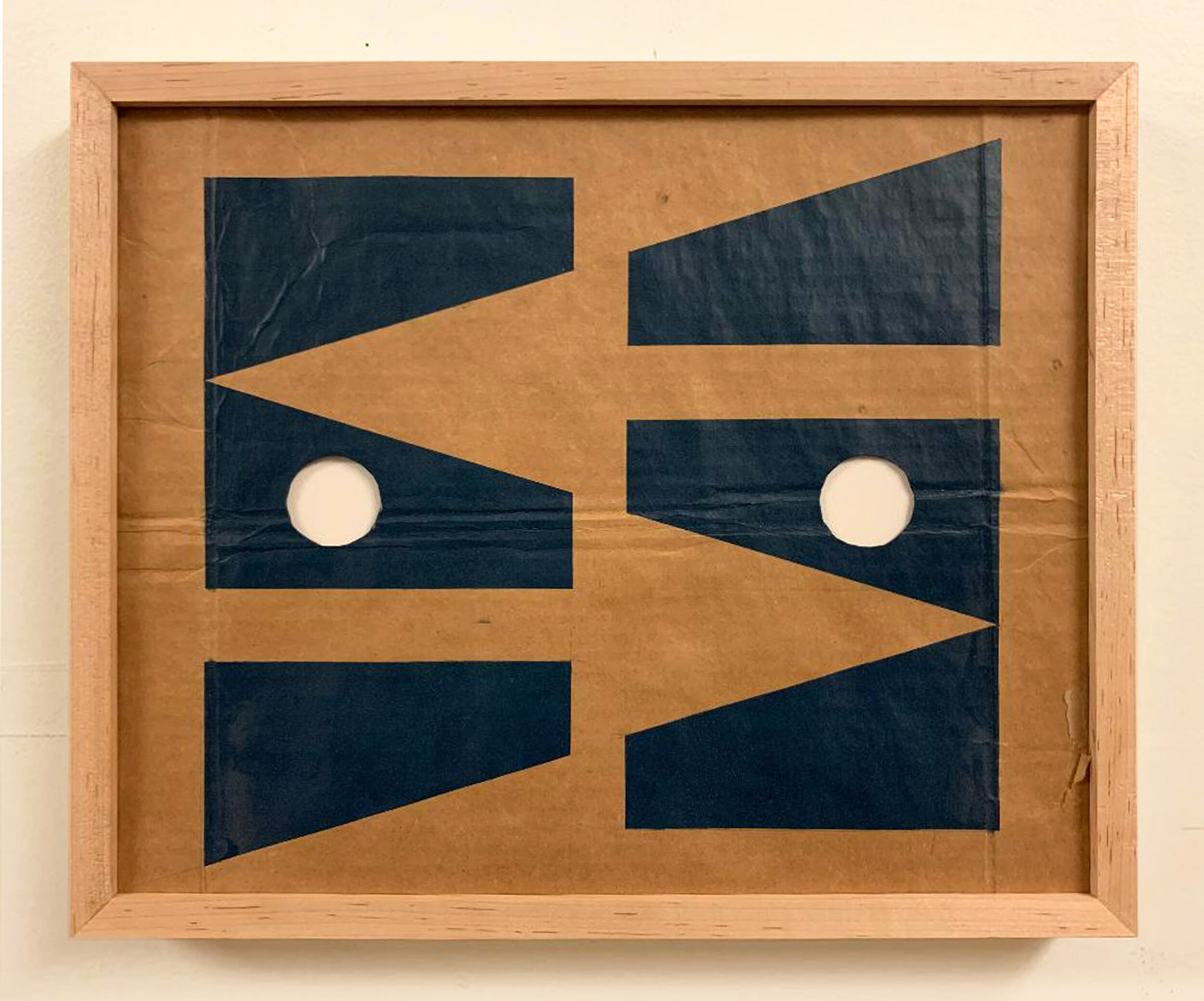
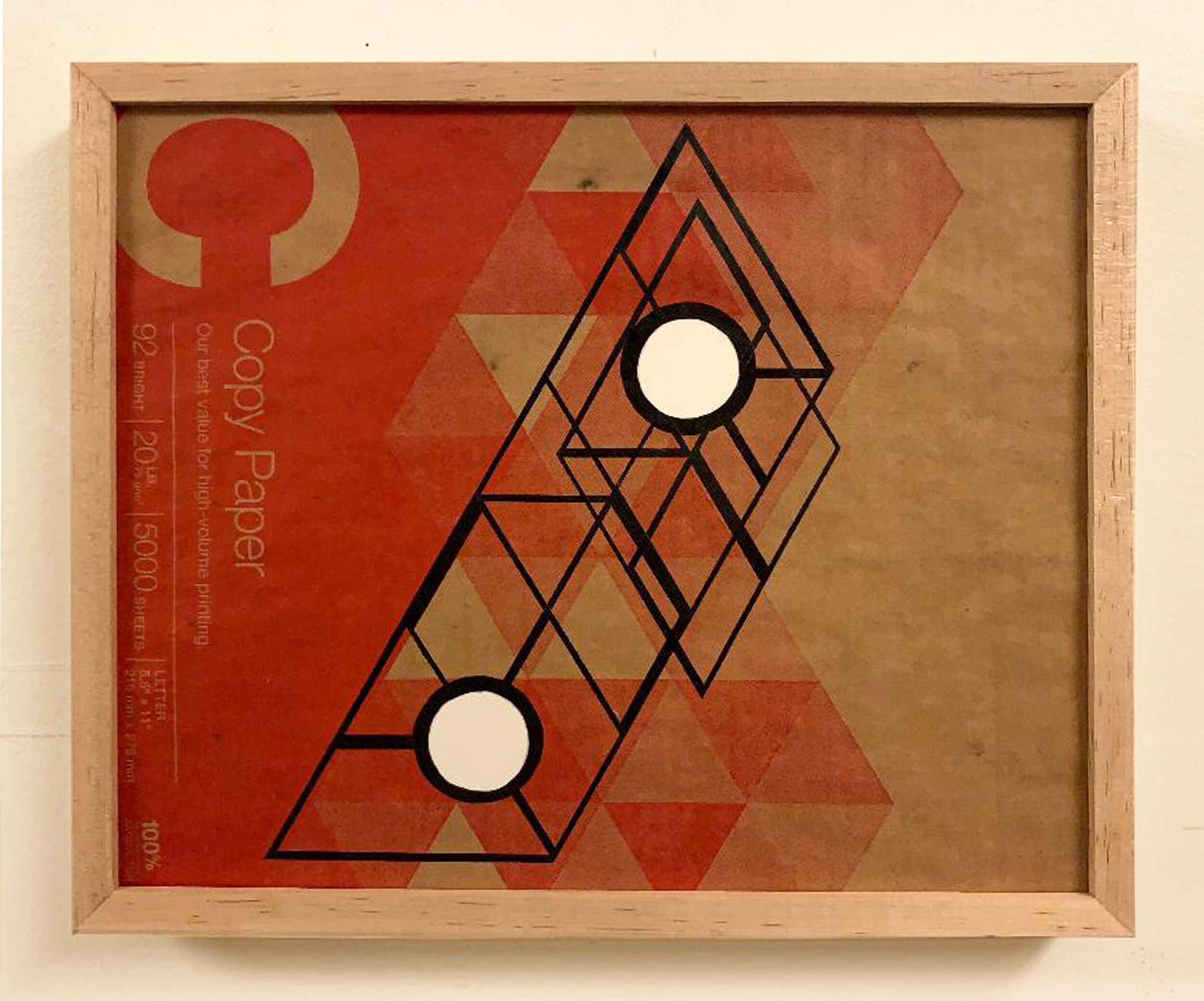
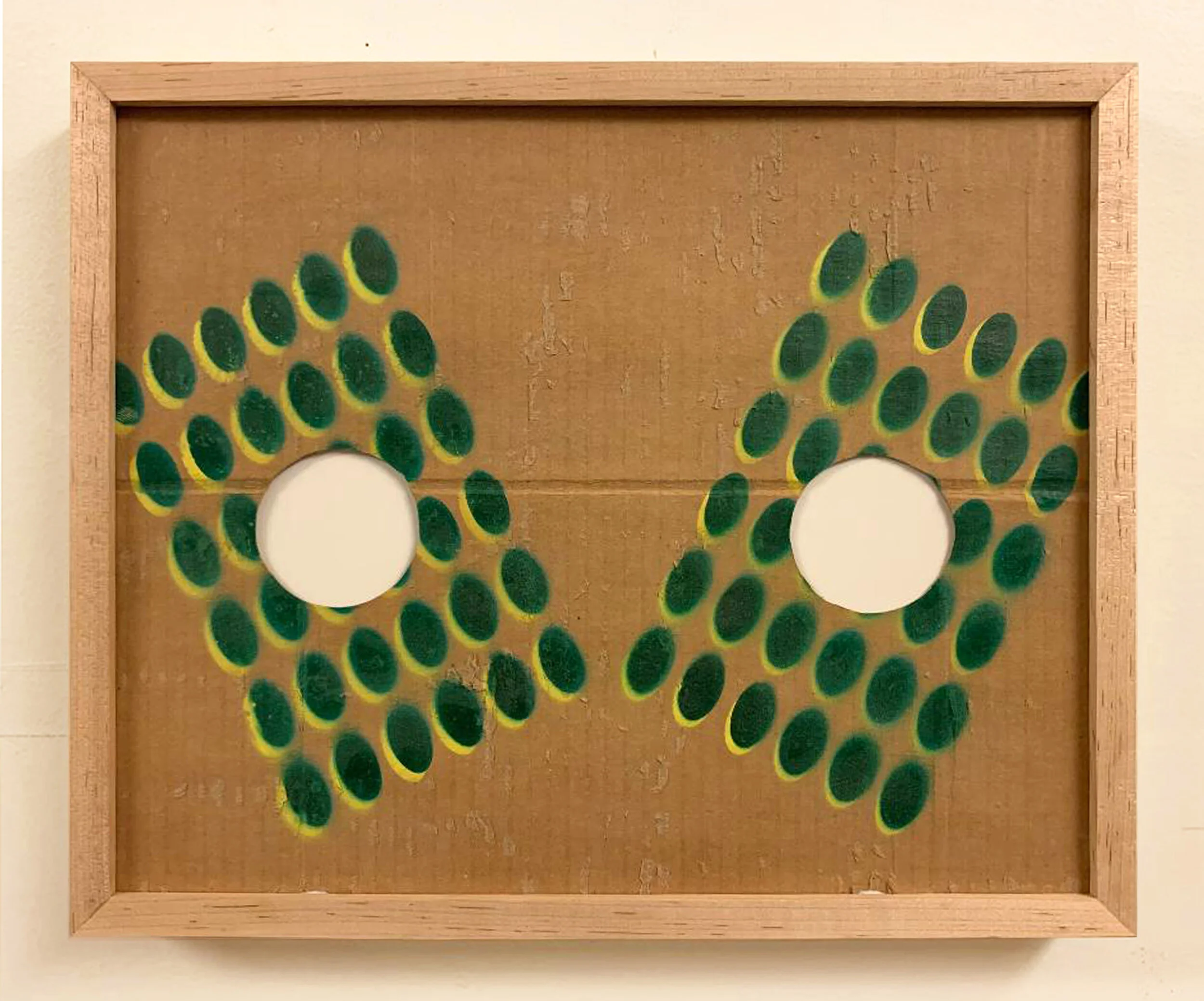
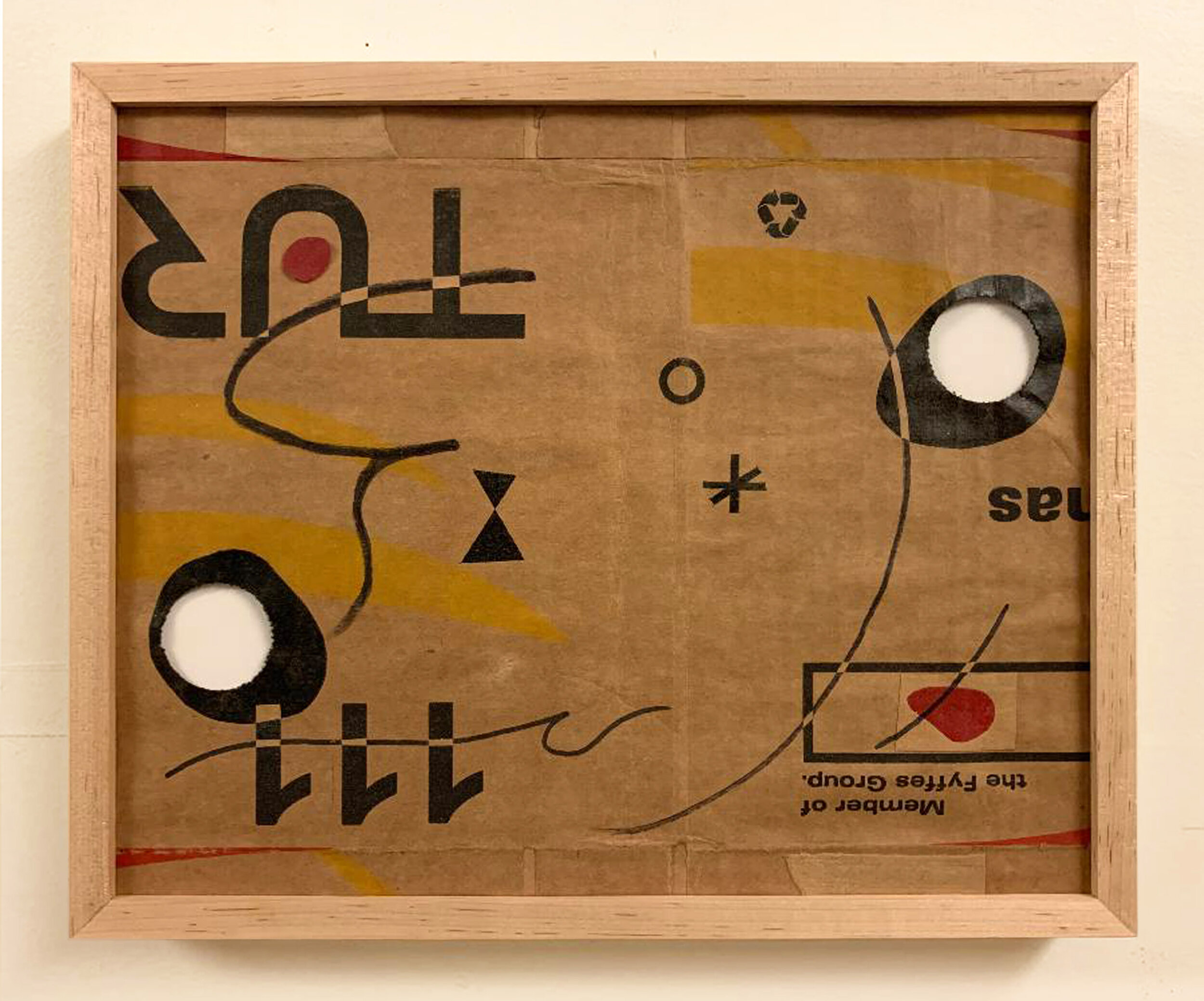
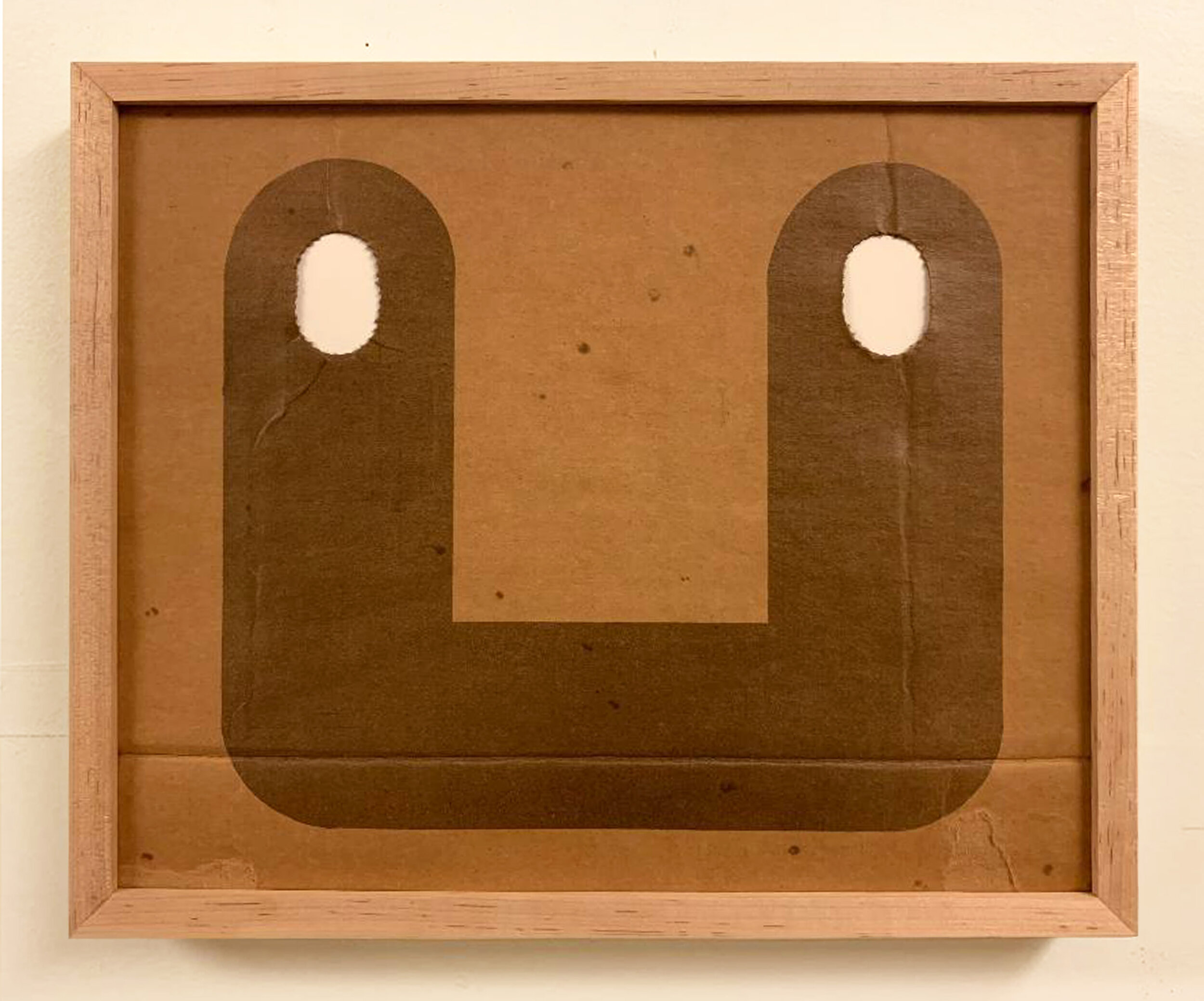
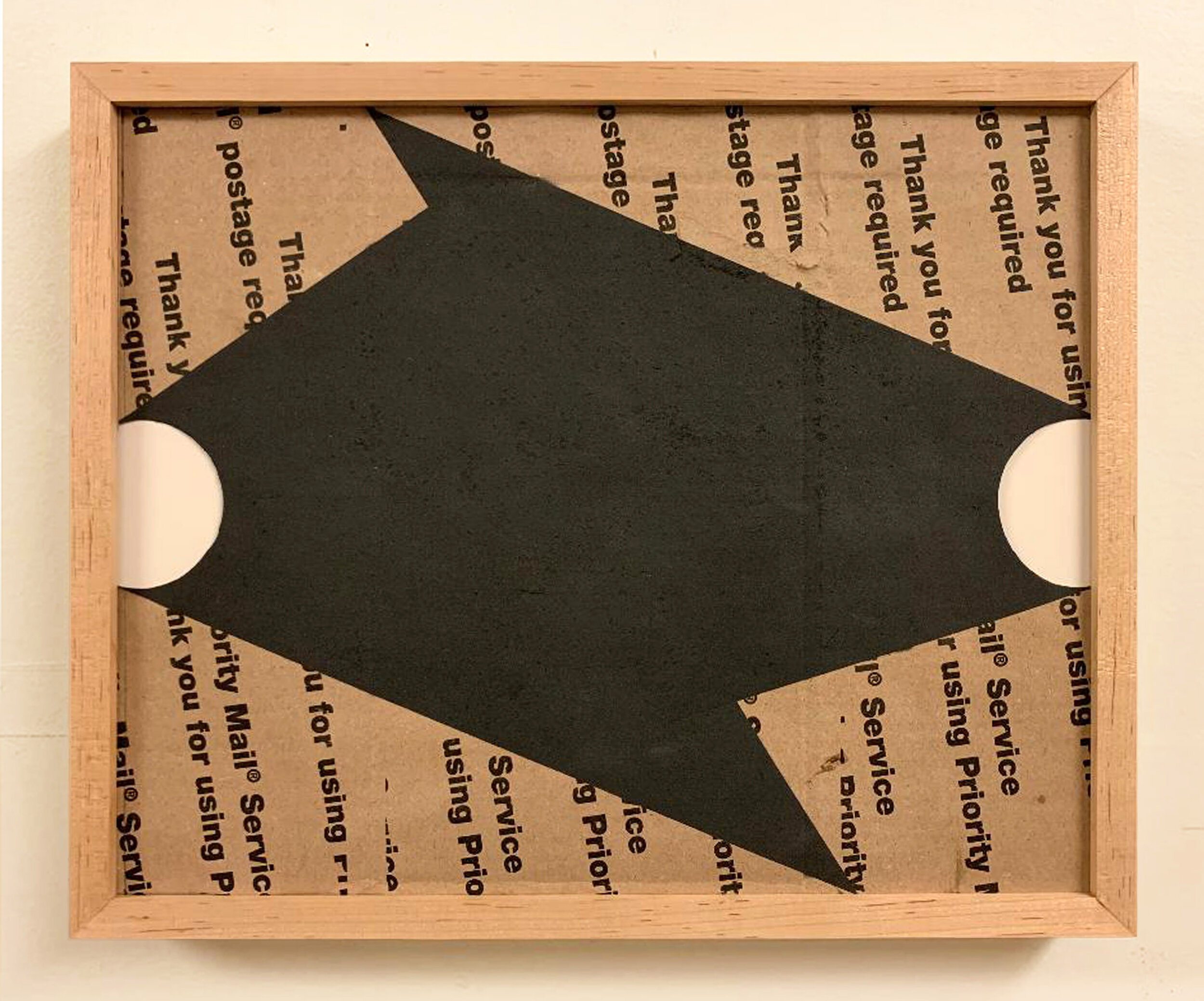

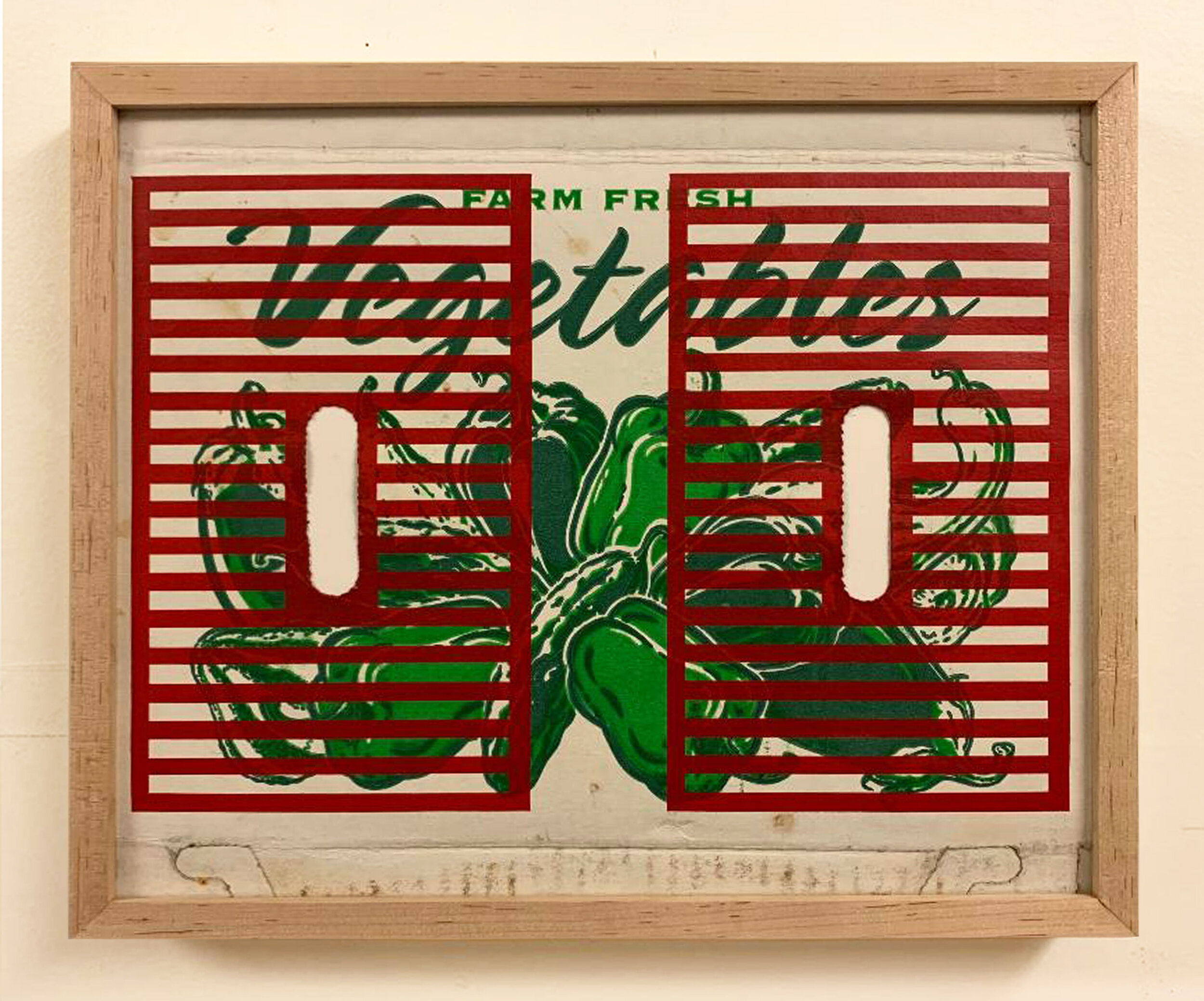
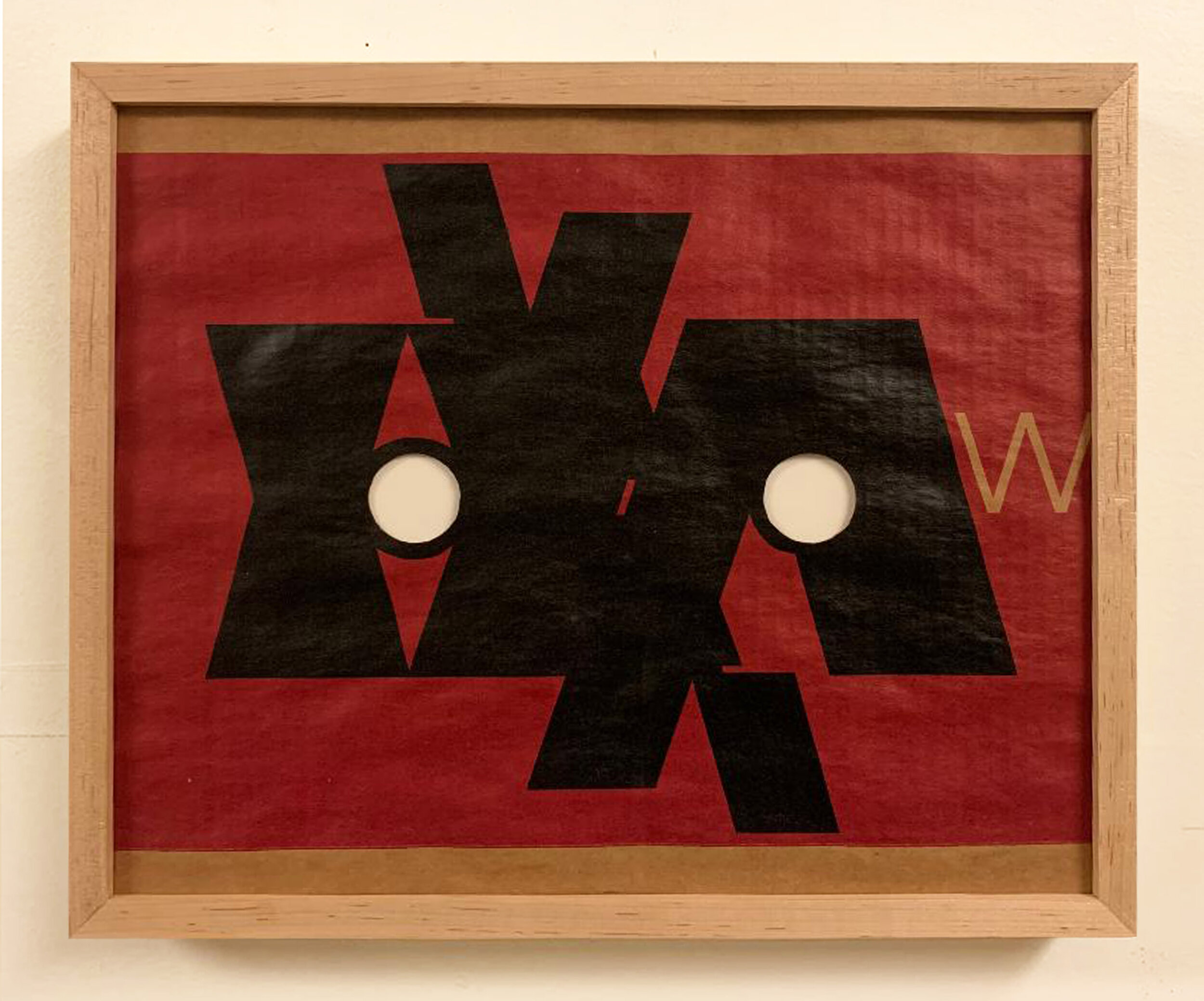
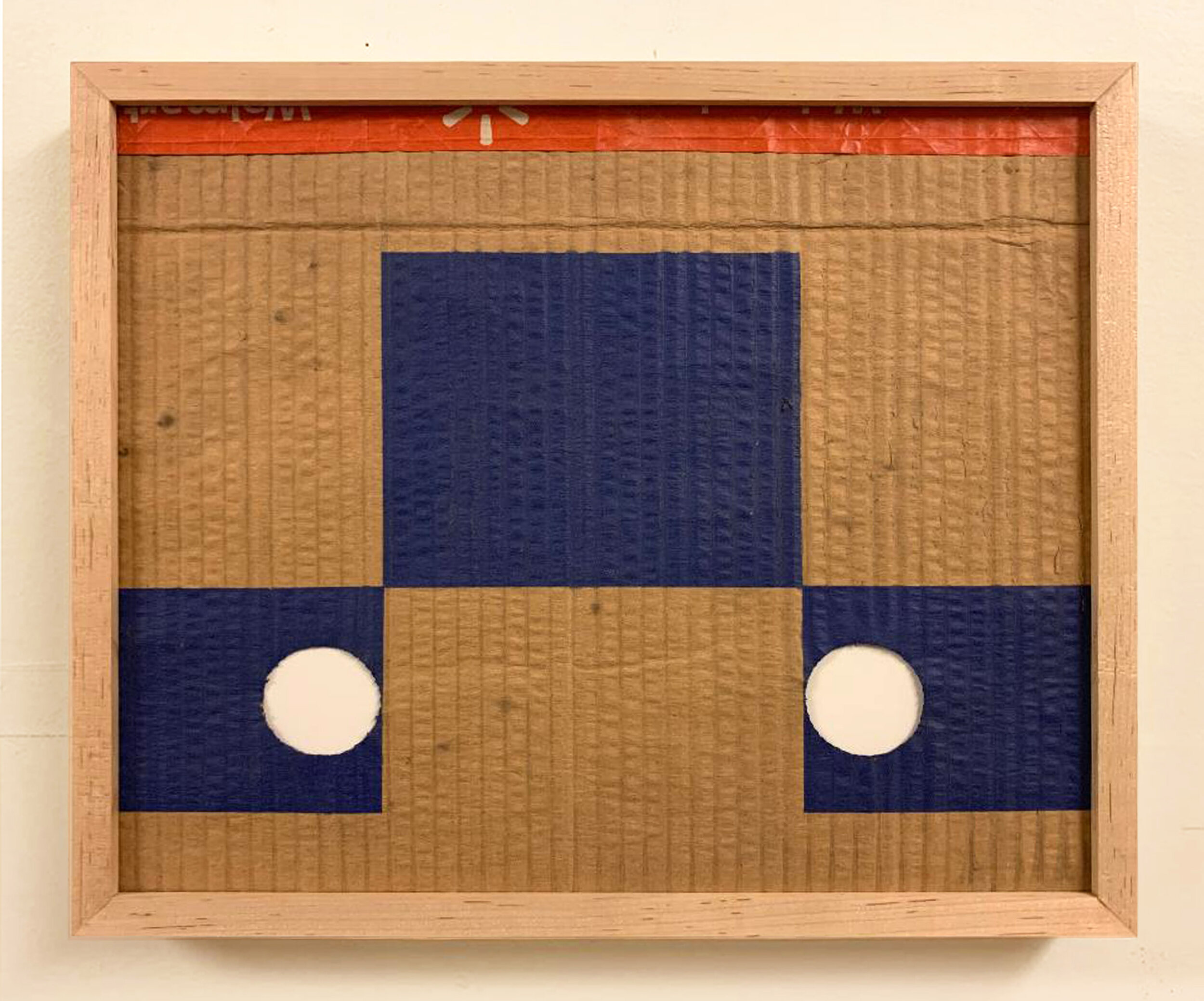
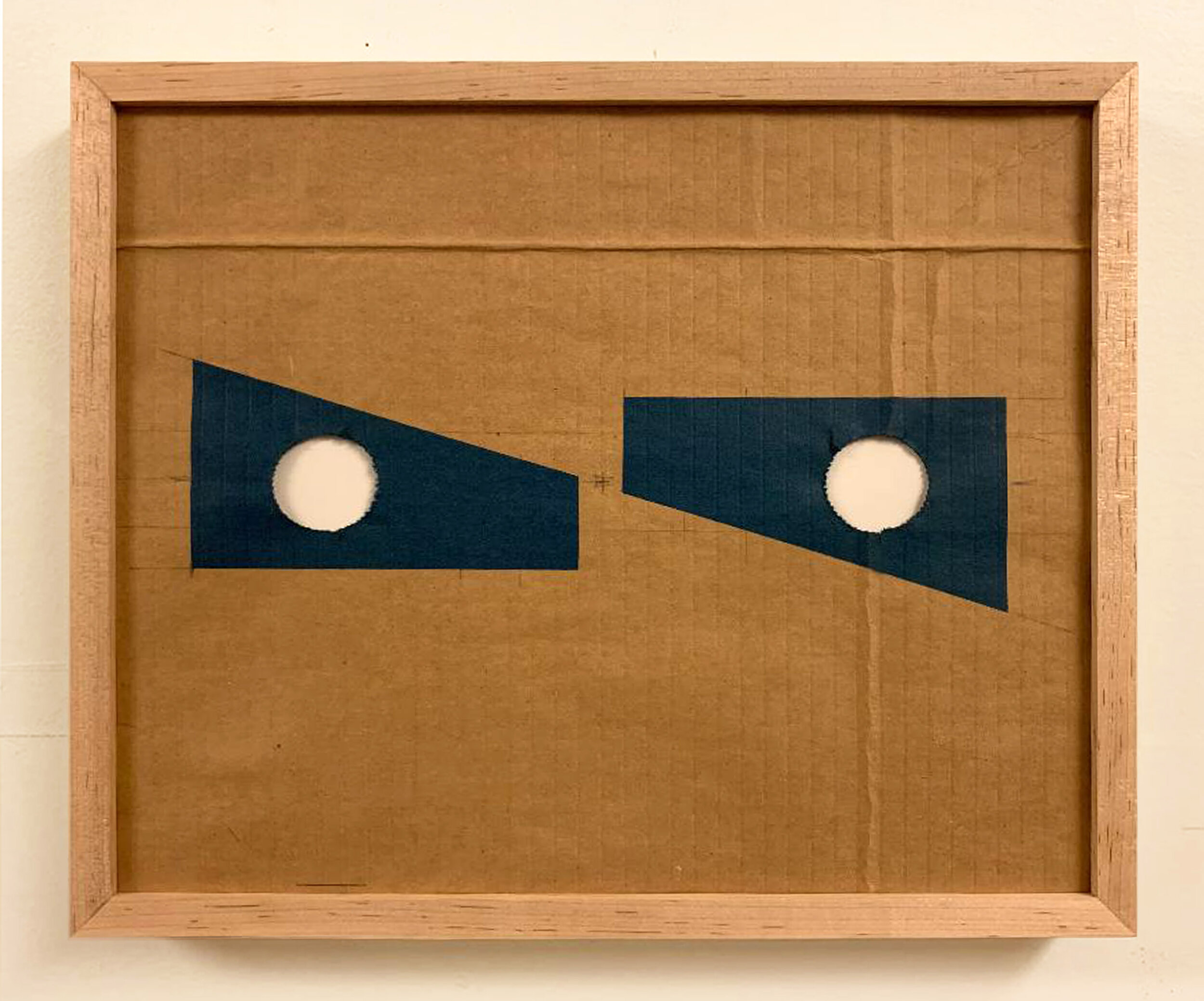
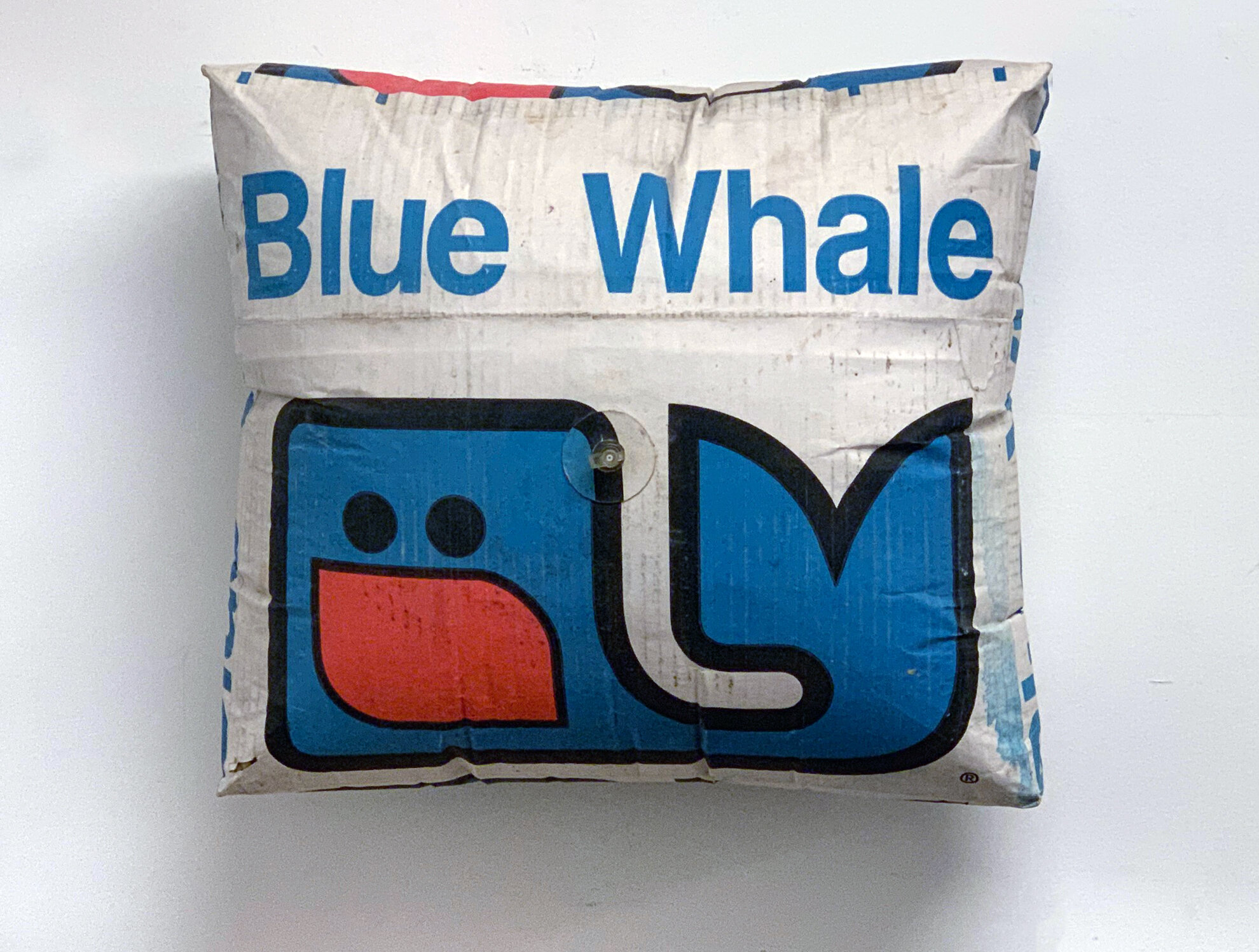

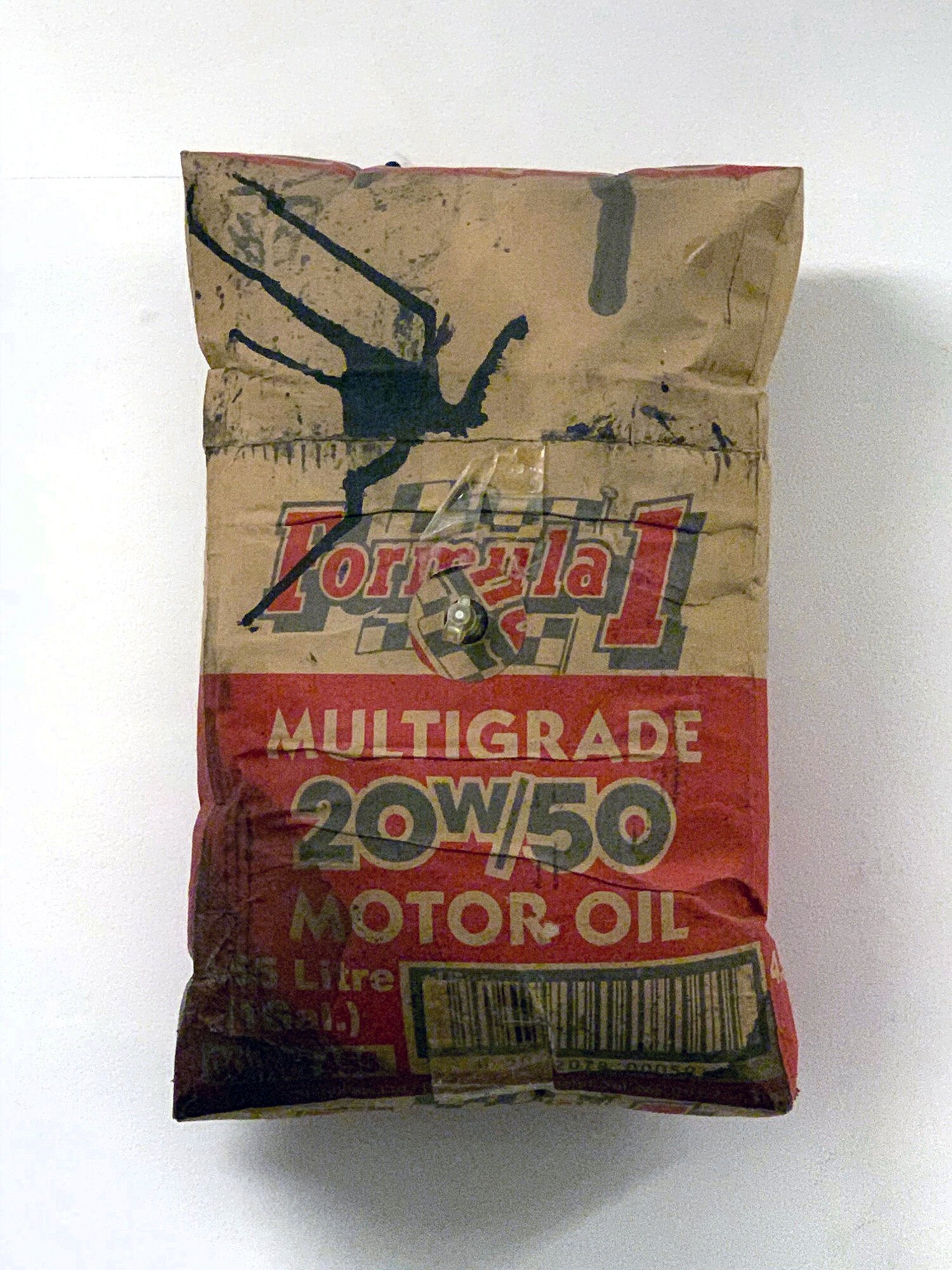
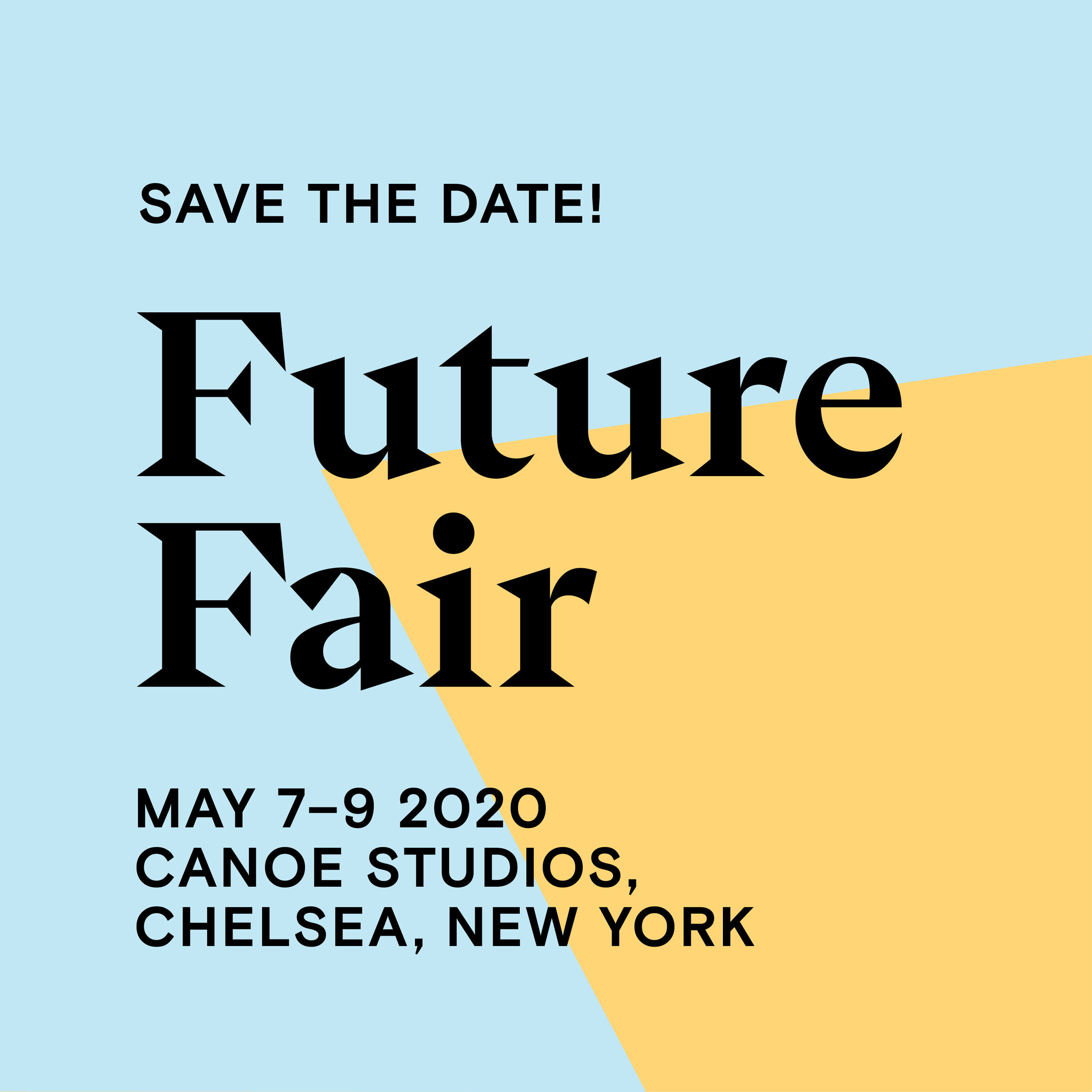
Your Custom Text Here
LIVE Virtual Studio Visit
Tuesday, May 19 from 6PM-7PM
Artist Interview on ZOOM linked here
Exhibiting another rendition connected to the historic “Cabaret Voltaire”, Elijah Wheat Showroom reinvents the conversation between politics and art. We present Clive Murphy: the artist as enabler. As the Dead Kennedys album title proclaims: “Give Me Convenience or Give Me Death”, and Murphy’s punk-like sensibility comes via a certain convenience. The ‘artist’ thrives in a system which consumes the gallery’s livelihood in a folly of cardboard carnage.
The commercial production of Clive Murphy’s “Pelts” and “Inflatable Boxes” has been made possible by means of deconstructed cardboard, each segment of which is forever marked by the industrial ink laid down before Murphy’s future-forward aerosol interruptions. The spray paint serves as a proxy to the screen printing which gave first function to each box. Rigorous aesthetics interact with a Neo-dadaist practice fueled by Murphy’s penchant for the absurd.
In the first place, the cardboard box and its contents were not created for an end-user. Markets received the box full of contents in a mode instantly comprehensible to the retailer. Now, though, the box comes right to the consumer. The footprint of the box has moved beyond its initial purpose. Born in Brooklyn, the most compelling feature of the box was that it was stackable. The stack factor made it far more suitable for storage and transportation than its antecedent, the sack.
The sack became the box becomes the skin. Art takes on mortality. The artist’s air may become substituted by the collector’s air, creating an exchange of breath. Inside Murphy’s assemblages lie masks, the interplay between cut-outs and marks evoking a humanlike familiarity for the viewer. The eye is invited to react to an object that has already existed, passed on, yet regained a new purpose.
Considering the future world on offer to his children, Murphy acknowledges concerns for the environment yet does not fully enter into the idea of eco-art. His is a lo-fi form of art-making, derived from a historical understanding and rethinking of visual language. The materials are pragmatic, the design of the commercial marks is labored, but the hand-painted abstractions serve as Murphy’s solution to a complex equation within design.
LIVE Virtual Studio Visit
Tuesday, May 19 from 6PM-7PM
Artist Interview on ZOOM linked here
Exhibiting another rendition connected to the historic “Cabaret Voltaire”, Elijah Wheat Showroom reinvents the conversation between politics and art. We present Clive Murphy: the artist as enabler. As the Dead Kennedys album title proclaims: “Give Me Convenience or Give Me Death”, and Murphy’s punk-like sensibility comes via a certain convenience. The ‘artist’ thrives in a system which consumes the gallery’s livelihood in a folly of cardboard carnage.
The commercial production of Clive Murphy’s “Pelts” and “Inflatable Boxes” has been made possible by means of deconstructed cardboard, each segment of which is forever marked by the industrial ink laid down before Murphy’s future-forward aerosol interruptions. The spray paint serves as a proxy to the screen printing which gave first function to each box. Rigorous aesthetics interact with a Neo-dadaist practice fueled by Murphy’s penchant for the absurd.
In the first place, the cardboard box and its contents were not created for an end-user. Markets received the box full of contents in a mode instantly comprehensible to the retailer. Now, though, the box comes right to the consumer. The footprint of the box has moved beyond its initial purpose. Born in Brooklyn, the most compelling feature of the box was that it was stackable. The stack factor made it far more suitable for storage and transportation than its antecedent, the sack.
The sack became the box becomes the skin. Art takes on mortality. The artist’s air may become substituted by the collector’s air, creating an exchange of breath. Inside Murphy’s assemblages lie masks, the interplay between cut-outs and marks evoking a humanlike familiarity for the viewer. The eye is invited to react to an object that has already existed, passed on, yet regained a new purpose.
Considering the future world on offer to his children, Murphy acknowledges concerns for the environment yet does not fully enter into the idea of eco-art. His is a lo-fi form of art-making, derived from a historical understanding and rethinking of visual language. The materials are pragmatic, the design of the commercial marks is labored, but the hand-painted abstractions serve as Murphy’s solution to a complex equation within design.